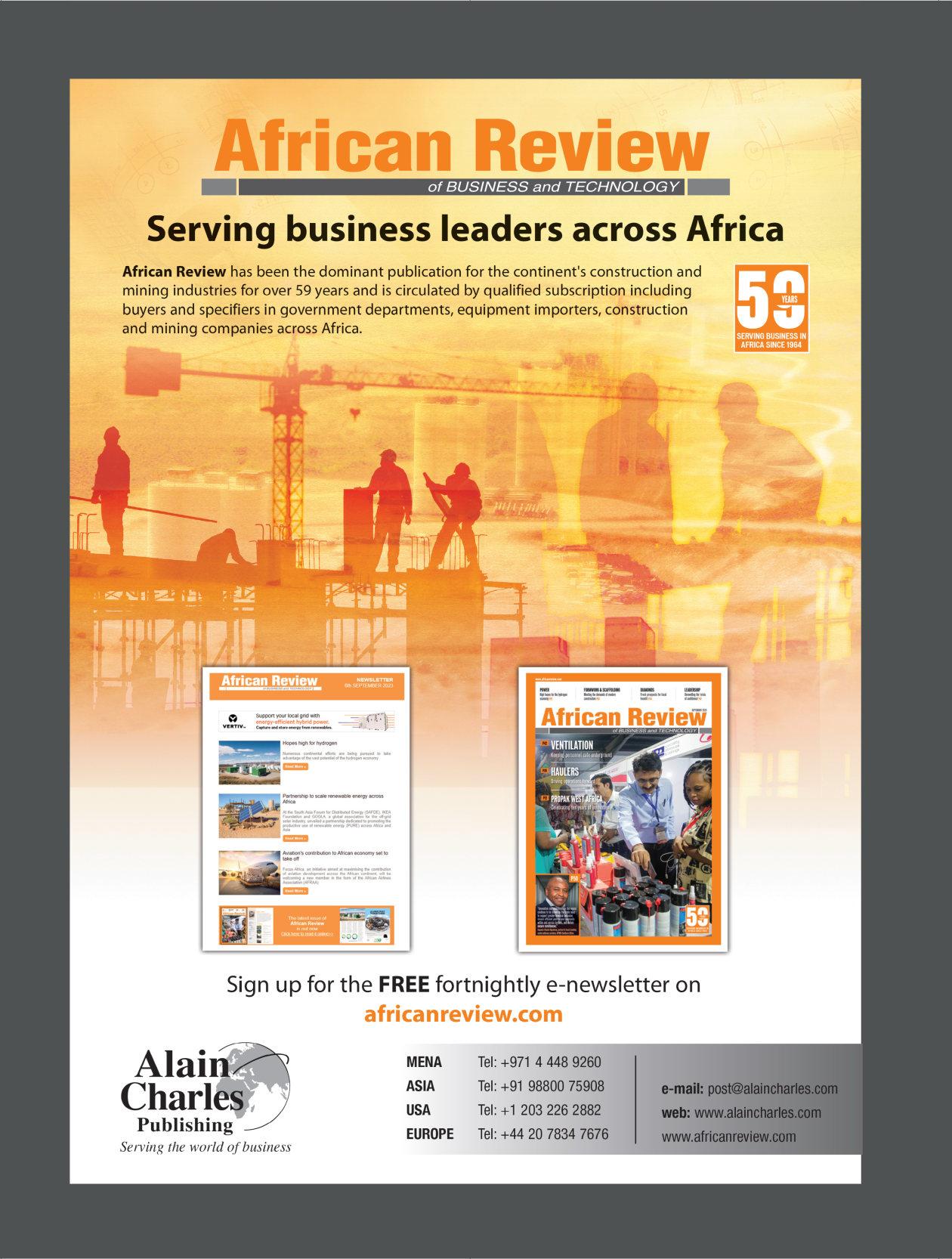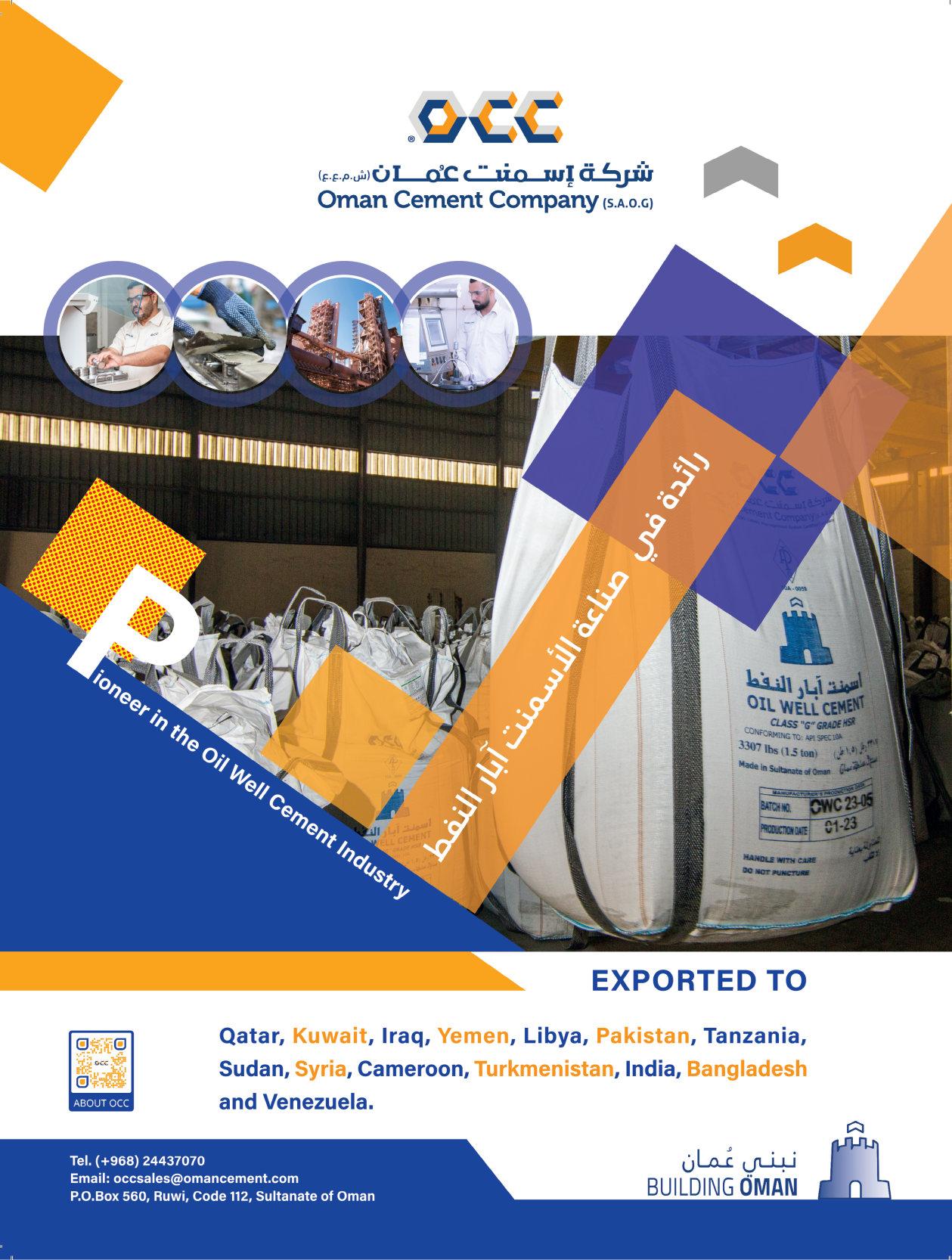NIGERIA COUNTING on global investors
Southern Africa’s growing E&P developments
Natural gas as vehicular fuel

Asset management, local content, drilling

WWW.OILREVIEWAFRICA.COM VOLUME 18 | ISSUE 5 2023
Pg 10
Advancing equitable clean energy in developing nations,

Nigeria is anticipating global investments to bolster its energy sector.
Image Credit: Adobe Stock
EDITOR’S NOTE
IN THIS ISSUE, we take a closer look into the various measures that the Nigerian government has rolled out to keep the country’s oil and gas industry up and running. The sector has received heavy blows owing to a raging inflation in the country.
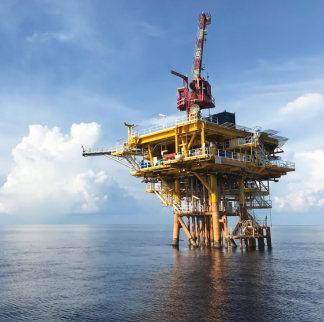
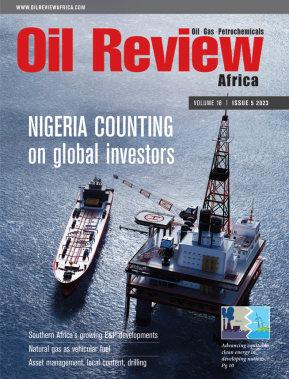
Nigeria is now increasingly looking towards natural gas as a vehicular fuel as NNPC and NIPCO strike a deal to launch 35 CNG stations in phases over the span of a year.

Speaking of natural gas, Mozambique is increasingly becoming the destination of choice for the global market’s LNG requirements. South Africa is celebrating as much as 6.4 bn cu/ft of gas findings, thanks to Kinetiko Energy. Other countries from southern Africa such as Angola and Namibia are also witnessing positive developments in the industry.
Catch all that and much more from Angola’s local content laws in oil and gas, latest developments in satellite communications to an exciting preview of ADIPEC 23.
Madhurima Sengupta Editor
CONTENTS
Editor: Madhurima Sengupta
madhurima.sengupta@alaincharles.com
Editorial and Design team: Prashanth AP, Sania Aziz, Miriam Brtkova, Robert Daniels, Shivani Dhruv, Matthew Hayhoe, Leah Kelly, Rahul Puthenveedu, Madhuri Ramesh, Louise Waters and Minhaj Zia
Publisher: Nick Fordham
Head of Sales: Vinay Nair
E-mail: vinay.nair@alaincharles.com
International Representatives
IndiaTanmay Mishra
NigeriaBola Olowo
South AfricaSally Young
Head Office:
Alain Charles Publishing Ltd
University House, 11-13 Lower Grosvenor Place, London SW1W 0EX, United Kingdom
Tel: +44 (0) 20 7834 7676 Fax: +44 (0) 20 7973 0076
Middle East Regional Office:
Alain Charles Middle East FZ-LLC Office L2-112, Loft Office 2, Entrance B P.O. Box 502207, Dubai Media City, UAE Tel: +971 4 448 9260 Fax: +971 4 448 9261
Production: Rinta Denil, Ranjith Ekambaram, Eugenia Nelly Mendes and Infant Prakash
E-mail: production@alaincharles.com
Subscriptions: circulation@alaincharles.com
Chairman: Derek Fordham
Printed by: Buxton Press
Printed in: September
© Oil Review Africa ISSN: 0-9552126-1-8
The
22 Southern Africa special report
The region is currently a hotbed of exploration and production activities
Natural gas
Africa is largely looking towards natural gas as a vehicular fuel among other applications TECHNOLOGY
Africa is poised to witness a new era of technological advancement
Optimising operations by streamlining preventive maintenance
Serving the world of business
NEWS 4 Calendar of events Diary dates of executives 6 News ADIPEC Awards, Saipem contracts, Neptune begins drilling in Egypt, production starts from Baleine Field COVER STORY 12 Nigeria
government is gearing up with a slew of measures for the country’s oil and gas sector. SPECIAL FEATURES 16 Local content Driving sustainable future through localisation
24
AND OPERATIONS
20 Satellite communications
28
Asset Management
ISSUE 5 2023 • WWW.OILREVIEWAFRICA.COM 3
Executives Calendar 2023
SEPTEMBER
17-21 24th World Petroleum Congress
Calgary, Canada
https://www.24wpc.com/
18-20
IDW-Downstream Conference
Türkiye
www.europetro.com/idw
19-21 Nigeria Energy
Lagos
https://www.nigeria-energy.com/
27-28 Mozambique Gas & Energy Summit
Maputo
https://www.mozambiqueenergysummit.com/
OCTOBER
2-5 ADIPEC
Abu Dhabi
www.adipec.com
9-13 Africa Oil Week
Cape Town
www.africa-oilweek.com
16-18 Energy & Sustainability Forum MENA
Riyadh
www.europetro.com/esfmena
NOVEMBER
1-2 MENA HSE Forum
Dubai
www.hse-forum.com/mena
Readers should verify dates and location with sponsoring organisations, as this information is sometimes subject to change.
Tapping into Mozambique’s LNG projects to be key topic of discussions at this year’s energy summit
THE MOZAMBIQUE GAS & Energy Summit & Exhibition 2023 will reconvene key Mozambican government, ministerial and industry stakeholders with international investors, developers and private sector value chain participants to engage in B2B networking, develop bilateral and local partnerships and exchange knowledge and best practices.
Participants can expect to meet and build relations with more than 3000 industry professionals working and collaborating to evolve the Mozambican energy landscape to ensure long-term future success for the country and its citizens within the global energy community.
Key topics to be explored in the show include:
6 Masterclass Programme - LNG and local content fundamentals
6 Global markets overview – Attracting investment for the next phase of energy projects
6 New projects and business: Models shaping the industry energy security and value chain integration
6 Latest innovations and energy technology solutions
6 Project financing: New structures supporting energy project expansion
6 LNG project implementation and development
6 Diversity, Equity and Inclusivity (DEI): Cooperation and collaboration for a fair, inclusive and just energy sector
6 Gas and renewables: Working together towards decarbonisation
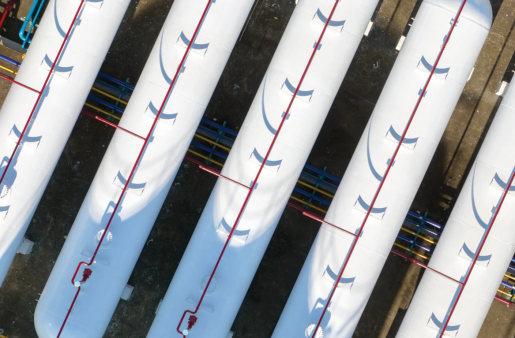
6 Gas-to-power and energy transportation: Projects, infrastructure development and timelines
6 New areas for oil and gas exploration
6 Maritime and marine sector opportunities
6 Utilities, power generation and energy end-users optimisation
6 Communities access to clean energy in Mozambique and the region: Mozambique becoming climate and energy resilient
6 Downstream and domestic gas
6 Sector spotlight: Adding value and expanding industrial clusters
6 Hydrogen, fertilisers and petrochemical opportunities and projects.
Top names from TotalEnergies, Eni and ExxonMobil to Bollore, Schlumberger, among others can be spotted in the event exhibition. This year’s sponsors are ENH, Sasol, Mozambique LNG, Saipem, and inp, to name a few.
With Mozambique's gas and LNG contracts starting to roll out, exhibitors can tap into a growing market by showcasing their company's products and services to key government officials and project operators in the country.
ISSUE 5 2023 • WWW.OI LREVIEWAFRICA.COM EVENTS CALENDAR 4
Image
Credit: Adobe Stock
With Mozambique's gas and LNG contracts rolling out, event exhibitors can target a growing market.
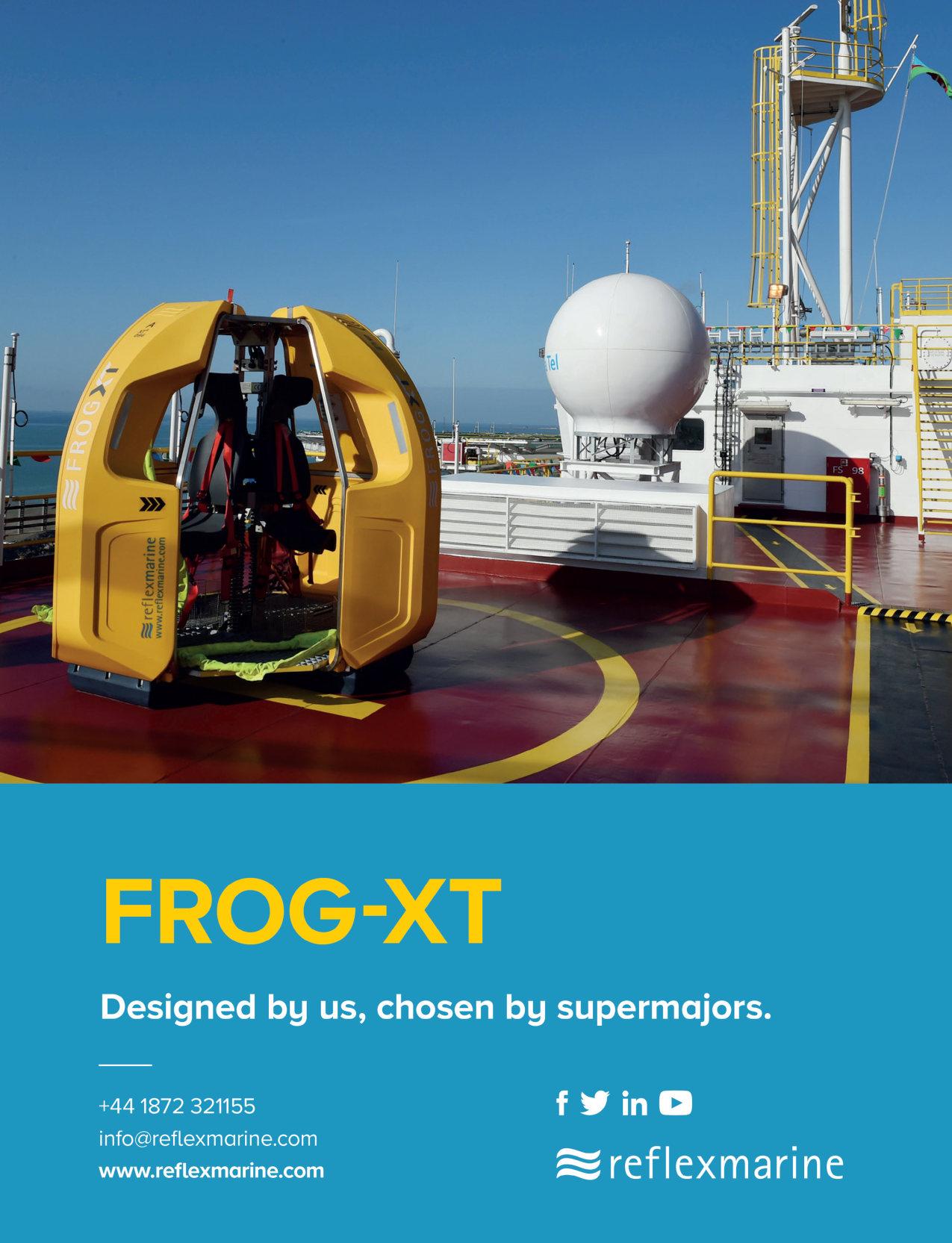
ADIPEC Awards finalists push net-zero boundaries

THE FINALISTS FOR the ADIPEC Awards 2023 have been revealed, with eight new awards up for grabs.
The Awards aims to recognise outstanding achievements within the energy and clean-tech sectors and celebrate global innovators in their pursuit to netzero. This year, the theme is ‘Leading the Transformation’ where the eight new award categories aim to respond to key global challenges as well as the need for universal access to cleaner and more secure energy.
The ADIPEC Awards 2023 attracted a record 1,072 submissions from 78 countries. The 21 finalists represent a wide array of industries spanning the Middle East, Europe, Asia, and
the Americas.
Fatema Al Nuaimi, chairperson of the ADIPEC Awards 2023 and executive vice president of Downstream Business Management at ADNOC, said, “I am delighted to see the intense competition for our all-new categories from global leaders, pioneers and
Kinetiko to develop South Africa’s largest LNG project
SUBSIDIARY OF KINETIKO
disruptors who are capturing emerging opportunities, driving transformative change and rethinking what it means to be an oil, gas and energy business today.”
The award winners will be announced at a gala dinner on 2 October as part of ADIPEC which will take place between 2-5 October in Abu Dhabi.
Cheiron announces first Nubia oil discovery in the Concession field
CHEIRON HAS ANNOUNCED that is has made a new oil discovery in the Geisum and Tawila West Concession (the Concession) in the Gulf of Suez.
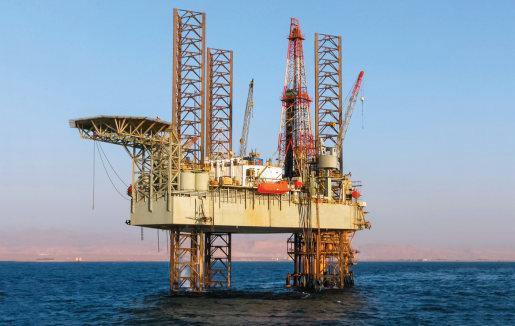
The discovery was made by the GNN-11 exploration well on the eastern side of the GNN oil
field development. The well encountered 165 ft of good quality vertical net pay in the Pre-Miocene Nubia formation, marking the first time the Nubia has been found to be oil-bearing in the GNN area of the Concession.
The well was drilled from the GNN Early Production Facility (EPF) and the production rate has been placed at a successful 2,500 bopd. As a result of the new well, the drilling campaign has meant that the gross oil production from the Concession has reached 23,000 bopd, compared to the previous 4,000 bopd before the GNN field was developed. A further three wells can be drilled from the EPF and these will complete the current phase of the GNN drilling programme.
The new Nubia discovery confirms the potential for further exploration in the northern area of the Concession, and Cheiron with Kufpec are planning to drill at least three additional exploration wells in the Concession area.
Energy Ltd. (Kinetiko), Afro Energy Ltd. (Afro Energy), has executed a non-binding Term Sheet agreement with the Industrial Development Corporation of South Africa (IDC) for the development of an energy transition solution focused on LNG commercialisation.
The development aims to deliver 50MW of gas equivalent energy, with the hopes of growing to 500MW. The first stage of the 50MW equivalent project is estimated to cost approximately US$88.2m, comprising of around US$57.5m in equity and US$30.7m in debt.
Nick de Blocq, Kinetiko CEO, said, “This is a step change in the scale of the company’s development and represents a national project to support South Africa’s transition to cleaner, reliable, affordable energy.
“The project has been registered under the Strategic Infrastructural Projects management mechanism that operates from the Office of the President. This is expected to expedite all State and Government-related processes in terms of permitting and licensing and minimising of red-tape.
“We are beyond delighted to be able to say that our journey towards a large-scale project commercialisation and production has now begun.”
The project will consist of ‘Block 1’ which will be the 50MW-equivalent LNG operation for commercial development of on-shore wells, and ‘Further Blocks’ which will focus on the commercial development of additional onshore natural gas wells.
ISSUE 5 2023 • WWW.OI LREVIEWAFRICA.COM NEWS 6
The GNN-11 well has a successful production rate of 2,500 bopd.
Image Credit: dmg events
Image Credit: Adobe Stock
The 2022 ADIPEC Awards Ceremony.
Saipem celebrates significant contracts
SAIPEM, A LEADER in the engineering and construction of major projects for the energy and infrastructure sectors (both offshore and onshore) has been recently awarded with two significant new contracts amounting to a total value of around US$700mn.
This first contract was awarded by bp for offshore activities in the Gulf of Mexico while the second was delivered by Eni Congo for the conversion of Scarabeo 5 semisubmersible drilling unit into a separation and boosting plant (Floating Production Unit – FPU).
The FPU is a semisubmersible production platform that receives the production fluids from wellheads riser platforms, separates the gas from liquids and boosts the gas in order to feed the nearby Floating LNG (FLNG) unit.
For this contract, Sapiem will conduct the engineering, procurement, construction, transportation and commissioning of the FPU which will be installed offshore the coast of the Republic of Congo. It will sit in a depth of about 35 m and is located northwest of the Djeno Terminal.
This endeavour is part of Eni’s Congo LNG Project and is the country’s first natural gas liquefaction project that is expected to reach an overall liquefied natural gas production capacity of 3mn tons per year from 2025.
As such, the commissioning of offshore works and the startup of the FPU are scheduled in Q4 2025.
BRICS discussions set the stage for Africa Oil Week
RUNNING FROM 9-13 October in Cape Town, South Africa, Africa Oil Week (AOW) is the continent’s premier event for the international oil and gas industry and will serve as a crucial platform for global leaders.
With an expected participation of around 1,800 delegates including 50 energy ministers, policymakers, investors and various industry experts, the conference will facilitate detailed discussions on the future of energy, responsible resource development and oil exploration across the continent.
The theme of this year’s AOW, ‘Maximising Africa’s Natural Resources’, has resonated with the sentiments expressed during the recently held BRICS Summit which aimed to foster substantive dialogues among government representatives, energy policymakers, financiers, and
The 2023 AOW summit is a platform for pragmatic solutions.
dealmakers to chart a sustainable path forward for the continent's abundant natural resources, including oil.
The CEO of the Gauteng Growth and Development Agency, Saki Zamxaka, highlighted during the BRICS Business Council event that while some financial institutions are fast-tracking the withdrawal of funding for hydrocarbon projects,
they remain an integral part of the continent’s energy strategy.
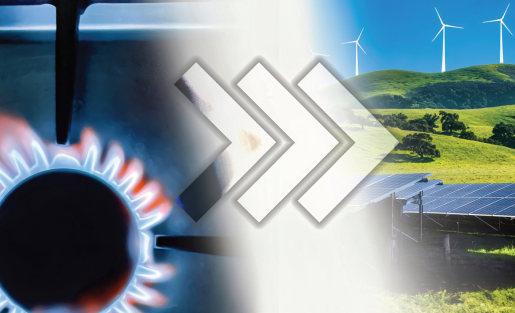
Such discussions at the BRICS Summit set the stage for the upcoming AOW conference, for which industry stakeholders are now eagerly awaiting.
For more information about Africa Oil Week and to register for the summit, visit: https://africaoilweek.com/home
EGY23 Merneith survey offers promise for offshore Egypt
PGS, A TECHNOLOGICALLY focused oilfield service company providing geophysical services worldwide, is engaged in conducting a new survey for a deepwater area offshore Egypt which is offering much promise for new discoveries.
The deepwater area under scrutiny is located between the Nile Delta and the Herodotus Basin and is expected to release

early data in the first quarter of 2024, with final imaging results in May of the same year. Fresh 3D GeoStreamer data is expected to yield detailed insights into prospective opportunities in the region. With the Herodotus Basin yielding significant untapped potential, the region has captured the imagination of the industry of late so that much is
expected from the new survey.
The EGY23 Merneith survey draws on the expertise of PGS’ partners EGAS, the Egyptian Natural Gas Holding Company, and leverages the capabilities of the Ramform Titan vessel and PGS’ GeoStreamer broadband technology.
The presence of a variablethickness salt (evaporite) layer potentially serves as a seal across much of the area and PGS experts suggest that the prime targets within this domain are likely to be presalt OligoMiocene structures hosting clastic reservoirs.
The forthcoming seismic dataset will be uniquely relevant and there are many eyes on PGS as it prepares to deliver in the new year.
NEWS ISSUE 5 2023 • WWW.OI LREVIEWAFRICA.COM 7
The deepwater area under scrutiny is located between the Nile Delta and the Herodotus Basin.
Image Credit: Adobe Stock
Image Credit: Adobe Stock
Eco Atlantic Oil & Gas Ltd. announces audited results for 2023
ECO OIL & Gas Ltd., the oil and gas exploration company focused on the offshore Atlantic Margins, has announced its audited results for the year ended 31 March 2023.
Gil Holzman, president and CEO of Eco Atlantic, commented, "As a business we continue to make significant strides across our strategic portfolio of hydrocarbon assets in some of the world's most prolific exploration areas. Following the stabilising of commodity prices during the first half of this year, alongside a number of discoveries being made in and around the regions we operate in, we continue to see strong industry interest in our unique acreage positions in Orange Basin SA, Walvis Basin Namibia, and the Guyana Suriname Basin.
"The agreed transfer of a portion of our WI on Block
3B/4B to our strategic alliance partner Africa Oil will strengthen the JV position amid our continued negotiations with third parties to farm into the Block and execute a drilling campaign targeted for 2024. The proceeds from this agreement give us the opportunity to fund other growth opportunities
elsewhere in the portfolio with no shareholder dilution. Also, at 3B/4B, we applied for Environmental Authorisation to undertake further drilling exploration activities as we believe that the licence holds significant potential to be explored by the Joint Venture partnership in South Africa.
Neptune Energy begins drilling Yakoot exploration well in Egypt
NEPTUNE ENERGY
ANNOUNCED drilling operations have begun at its operated Yakoot exploration well, located in the North West El Amal Concession in the southern Gulf of Suez, Egypt.
It is the first operated well to
Green hydrogen partnership agreements in Morocco
CHARIOT
GREEN
HYDROGEN Limited, a subsidiary of Chariot Limited, the Africa-focused transitional energy group, Mohammed VI Polytechnic University (UM6P) and Oort Energy Limited (Oort), have signed further Partnership Agreements to extend their collaboration, as previously announced in November 2022, to test the production of green hydrogen in Morocco.
The agreements are focused on the construction, commissioning and operating of an electrolyser pilot project as well as further development of skills and training within the sector.

be drilled by Neptune in Egypt.
The operation is being carried out with the ADM-8 rig, operated by ADES, and has a final target depth of around 3,600 m.
Neptune was awarded the exploration licence for the North West El Amal Concession in

February 2019, and acquired advanced 3D seismic data in 2020.
Neptune Energy’s managing director in Egypt, Alexandra Thomas, said, “Drilling the Yakoot prospect is a significant milestone for Neptune in Egypt and we are grateful for the support of the Egyptian Petroleum Ministry and the Egyptian General Petroleum Corporation (EGPC).
The partnership will concurrently develop education and capacity building at UM6P to support the growth of a green hydrogen economy alongside evaluating the feasibility of the implementation of large-scale green hydrogen and ammonia production, consistent with the timetable initially envisaged.
The operation is being carried out with the ADM-8 rig, operated by ADES.
“After many months of careful preparation, working closely with our stakeholders and partners, we are fully focused on safely drilling this strategically important well.”
The North West El Amal offshore concession covers 365 sq km and is located approximately 42 km southeast of Ras Gharib and 105 km northwest of Hurghada.
“The signing of these two agreements is key for UM6P, indeed the first one concerns the test of a new electrolyser technology with a better performance to be more competitive in green hydrogen production and second one concerns collaboration in education to prepare skilled people for the need of this new activity in green hydrogen and ammonia,” stated Mohamed Bousseta, director of innovate for industry at UM6P, ” said Nick van Dijk, CEO of Oort.
ISSUE 5 2023 • WWW.OI LREVIEWAFRICA.COM NEWS 8
Image Credit: Adobe Stock
Image Credit: Neptune Energy
Eco Atlantic: Pioneering progress in offshore exploration and growth Opportunities.
AOG23 explores energy security among other issues
THE ANGOLA OIL & Gas conference and exhibition was officially launched in Luanda by event organiser Energy Capital & Power (ECP), alongside the Ministry of Mineral Resources, Oil and Gas and partners including the National Oil, Gas and Biofuels Agency (ANPG); the Oil Derivatives Regulatory Institute (IRDP); and national oil company Sonangol.
Representing the official oil and gas platform for the Angolan energy sector, AOG 2023 is taking place under the theme, ‘Energy Security, Decarbonisation and Sustainable Development’, with regional petroleum ministers, global investors and project developers, and both public and private sector firms convening in Luanda from 13-14 September to discuss the most pressing matters in the country’s oil and gas industry, forging a future built on the sustainable development of oil and gas.
AOG 2023 will be featuring panel discussions, investor summits and market-focused presentations covering the entire oil and gas sector and its value chain, falling in line with national efforts to position the country as a regional petroleum hub.
On the gas front, AOG 2023 comprises dedicated natural gas sessions with speakers exploring the role gas will continue to play in driving sustainable economic growth in Africa. Projects such as the Angola Liquefied Natural Gas facility, the Quiluma/Maboqueiro gas fields, the Cameia-Golfinho developments and others will be showcased.
TGS-Petrodata begins Awele South 3D multiclient survey offshore Nigeria
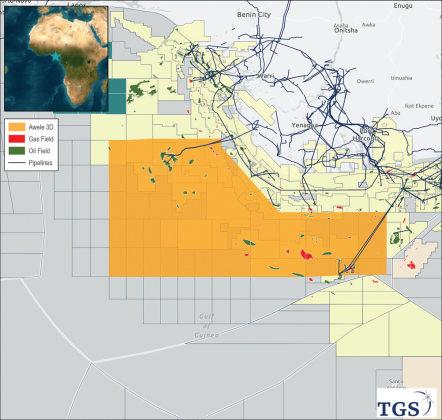
TGSPETRODATA, HAVING SECURED a Petroleum Exploration License (PEL) with support from the Nigerian Upstream Petroleum Regulatory Commission (NUPRC), has announced the commencement of the Awele South 3D multi-client survey offshore Nigeria. This project was previously announced at the TGS Capital Markets Day on 7 March.
Will Ashby, executive vice-president for the Eastern Hemisphere at TGS, commented, "TGS-Petrodata has an extensive multi-client data library in Nigeria, including reprocessed 2D seismic and our regional multibeam and seafloor sampling study. We are delighted to expand our footprint with the Awele South 3D survey. Since this project was announced in March 2023, the TGS-Petrodata team has worked diligently alongside the NUPRC, NCDMB, COSL and other stakeholders to ensure successful commencement of the survey.
“As one of Africa's largest and oldest hydrocarbon producers, unlocking this prospectivity and de-risking drilling operations will further bolster Nigeria’s energy production capacity. Having insight into the petroleum system of the Niger Delta basin will enhance our understanding of
the country’s potential energy resources.”
Under strict compliance with the Petroleum Industry Act (PIA) 2021, this project aims to enhance Nigeria’s energy potential by providing valuable insights into untapped hydrocarbon resources and revealing deep and ultra-deepwater petroleum systems of the Niger Delta Basin.
Eni begins production from Baleine Field offshore Côte dʼIvoire
ENI HAS STARTED production of oil and gas from the Baleine Field, located in the waters offshore Côte d’Ivoire.

This milestone comes less than two years after the discovery in September 2021 and less than a year and a half after the final investment decision (FID). This
marks the first emissions-freeScope 1 and 2 - production project in Africa.
Baleine currently stands as the largest hydrocarbon discovery in Ivorian sedimentary basin. For the initial phase, production takes place through the Baleine FPSO, a refurbished and
upgraded floating production storage and offloading unit capable of handling up to 15,000 bopd of oil and around 25 M standard cu/ft per day of associated gas. The start of Phase 2 is expected by the end of 2024 and will increase field production to 50,000 bbl/d of oil and approximately 70 M standard cu/ft per day of associated gas. The third development phase aims to elevate field production up to 150,000 bopd of oil and 200 M standard cu/ft per day of gas. The entire gas production from the Baleine Field in this development phase and the subsequent ones will be delivered onshore through a newly constructed pipeline.
NEWS ISSUE 5 2023 • WWW.OI LREVIEWAFRICA.COM 9
Image Credit: TGS Image Credit: Eni
Eni starts production from Baleine Field in Cote d’Ivoire with its partner PETROCI.
ADVANCING EQUITABLE CLEAN ENERGY IN DEVELOPING NATIONS
THE GLOBAL ENERGY transition presents unique challenges for developing nations that have not benefited from significant industrial and economic growth but are now expected to reduce emissions at the expense of their own development. To ensure an equitable global energy transition, it is crucial to support developing nations in their efforts to adopt clean energy sources through various technologies, policies and business strategies that promote lower-carbon development and inclusive growth.
In recognition of the importance of addressing climate change and achieving the sustainable development goals (SDGs) set out by the United Nations, supporting an equitable energy transition through clean energy in the developing world has gained significant attention in recent years.
Universal energy access is outlined in SDG 7, which aims to provide affordable, reliable, sustainable, and modern energy for all by 2030. This involves extending electricity grids, developing off-grid solutions, and promoting decentralised renewable energy sources like solar, wind, and small-scale hydro. For instance, the Lighting Africa programme, a partnership between the World Bank and the Global Off-Grid Lighting
Association, has provided affordable and clean lighting to offgrid communities in Africa, improving the quality of life for millions, particularly women and children. In Uganda, the Energy for Rural Transformation (ERT) project funded by the World Bank offers on-grid and off-grid access to electricity in Ugandan rural areas, including the installation of solar photovoltaic systems for public institutions in rural areas, business development support, provision of credit facilities to enhance electricity access and quality standards enforcement support.
Mobilising financial resources is crucial for deploying clean energy in developing countries. The international community is committed to supporting
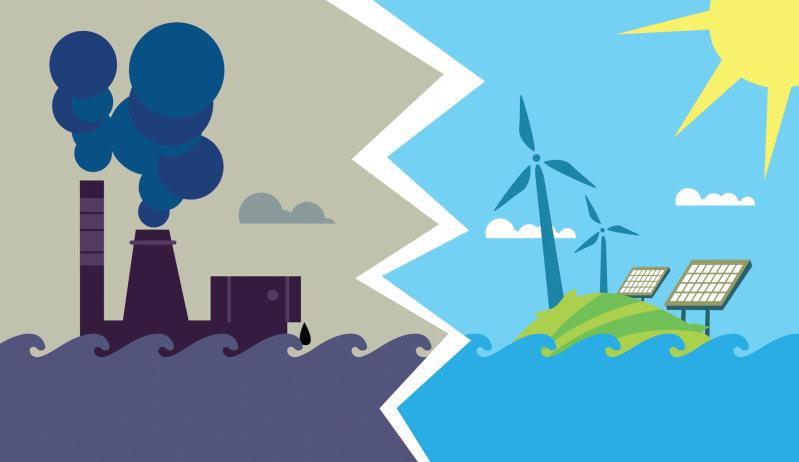
renewable energy projects through various financing mechanisms. Initiatives like the International Solar Alliance and the Green Climate Fund provide financial support and technical assistance to developing countries.
Facilitating technology transfer is another important aspect. Capacity-building programmes play a vital role in enhancing local capabilities in project development, implementation, operation, and maintenance.
Establishing conducive policy and regulatory frameworks is also essential for attracting investment and promoting clean energy deployment. Kenya and Morocco have made significant progress in deploying renewable energy through supportive policies,
incentives, feed-in tariffs, and streamlined regulations, attracting private sector investments.
On the industry side, initiatives like the ADIPEC Awards serve to recognise organisations that are paving the way for clean energy innovation. This year the Awards introduced the Developing Economies Energy Company of the Year to spotlight companies that are proactively implementing the technologies, policies, and/or strategies that support lowercarbon development and growth in developing economies. By celebrating such companies, ADIPEC is seeking to show the way forward toward an equitable clean energy transition.
Published originally by the Nation
It is crucial to support developing nations in their efforts to adopt clean energy sources through various technologies, policies and business strategies that promote lower-carbon development and inclusive growth, writes Proscovia Nabbanja, CEO, Uganda National Oil Company.
EQUITABLE TRANSITION ISSUE 5 2023 • WWW.OI LREVIEWAFRICA.COM 10
Image Credit: Adobe Stock
Supporting an equitable energy transition in the developing world has gained significant attention in recent years.
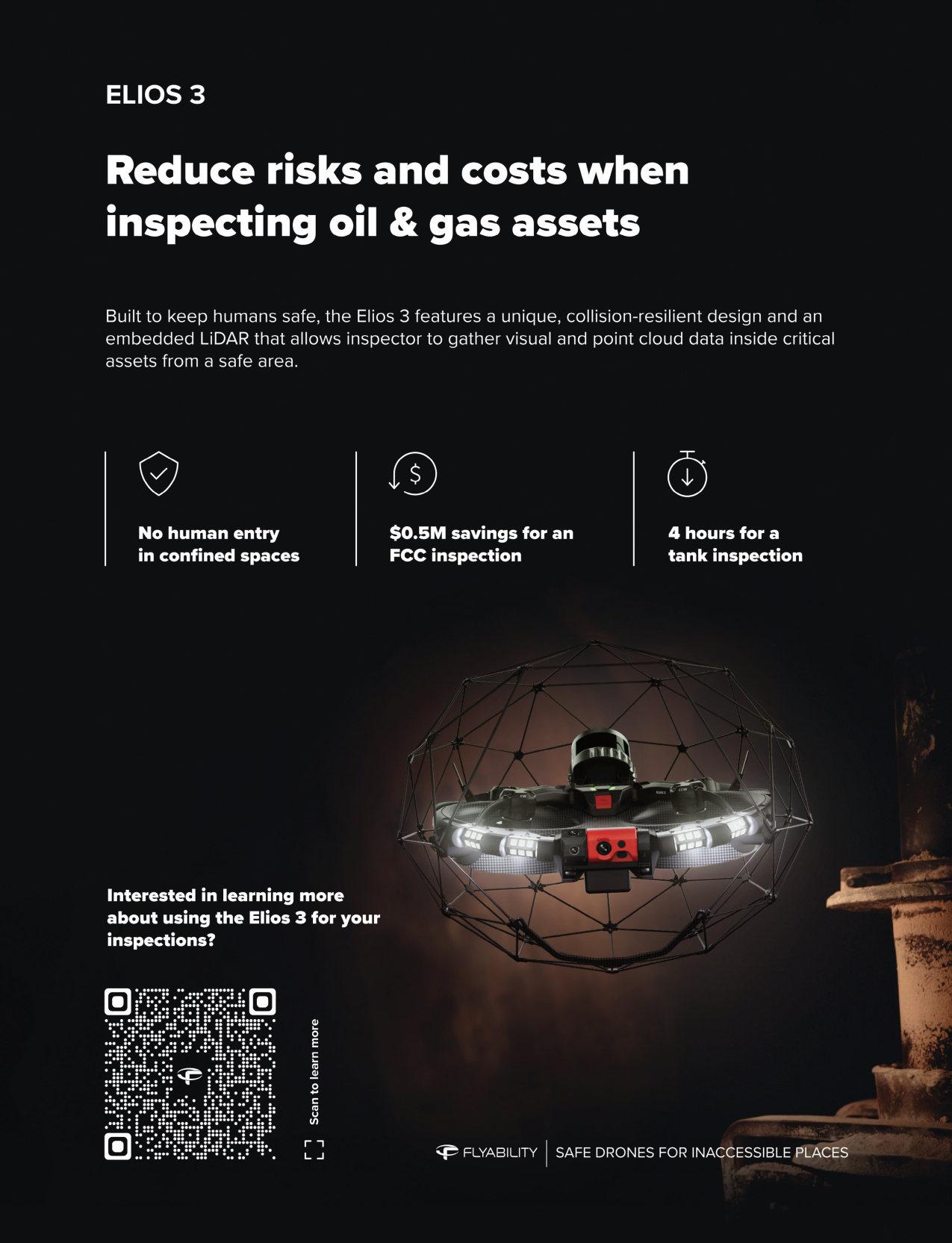
NAVIGATING A VOLATILE MARKET
The Nigerian government is taking a slew of measures to bring some relief to the country’s reeling oil and gas sector.
FOUR OIL REFINERIES in Nigeria will be up and running by the end of 2024, announced the Minister of State for Petroleum Resources, Heineken Lokpobiri. This is Lokpobiri’s first major announcement in his new role, following a reshuffling of the Cabinet of Ministers by President Bola Ahmed Tinubu.
The announcement comes as the two-unit 210,000 southern Port Harcourt plant prepares to begin operations by the end of this year, after a delay since 2022.
The four refineries that include the Kaduna plant in the north and three units in the Niger delta are lying dilapidated, out of operations for a while now. They have a combined capacity to process around 4.45 mn barrels per day. If this comes to fruition, Nigeria will not have to solely depend on refined fuel imports anymore.
The move also shows the Nigerian government’s commitment on bringing some relief to the country’s reeling oil and gas sector, which is experiencing fresh lows due to a raging inflation.
A latest analysis from Westwood Global Energy Group suggests that success for Nigeria’s oil and gas industry is possible only with timeliness of project completion, along with nationwide infrastructure and security improvements. It goes on to predict that Nigeria is only forecast to reach 2.6 mn boepd of

oil and gas output by 2030 if projects are progressed on schedule, which has not been the case historically. Data also reveals that any further delays could cause a permanent dent in Nigeria’s production ambitions.
An analysis by Oxford
Economics Africa does not paint a very different picture when it says that in the second quarter of 2023, Nigeria’s hydrocarbon sector dropped deeper into contractionary territory due to declining oil output, which further weakened industrial production. Rising inflation, elevated policy uncertainty, and weak oil output are expected to stifle economic activity throughout the year.
Michela Francisco, onshore energy analyst, Westwood, said, “Nigeria has traditionally been Africa’s largest oil producer, although the last 10 years have
been characterised by cuts to upstream capex, security instability and oil theft. However, hopes are high for revitalising the country’s oil and gas sector. While progress has already been made, Nigeria must continue to put measures in place to create an attractive business environment and entice local players and international energy companies to pave the way for the expected success.”
In another recent move to curb inflation, the NNPC Ltd sought the support of Afrexim Bank through a US$3bn Emergency Crude Repayment
The southern Port Harcourt plant will begin operations by the end of 2023.”
NIGERIA ISSUE 5 2023 • WWW.OI LREVIEWAFRICA.COM 12
Nigeria is forecast to reach 2.6 mn boepd of oil and gas output by 2030, predicts Westwood.
Image Credit: Adobe Stock
Loan. An official tweet by NNPC read: “The NNPC Ltd. and @afreximbank have jointly signed a commitment letter and Termsheet for an emergency $3billion crude oil repayment loan.
“The signing, which took place today at the bank’s headquarters in Cairo, Egypt, will provide some immediate disbursement that will enable the NNPC Ltd. to support the Federal Government in its ongoing fiscal and monetary policy reforms aimed at stabilising the exchange rate market.”
According to media reports, the interest rate of the loan may range from 8-11%.
Giving further insights into this loan agreement, Otega Ogra, senior special assistant to President Bola Ahmed Tinubu on digital and new media, explained in a tweet that it 'is not a crudefor-refined products swap but an upfront cash loan against proceeds from a limited amount of future crude oil production'. Speaking of risk factors involved, he assured that the exposure of NNPC Ltd covers just a fraction of their entitlements. The loan will be repaid against a fraction of proceeds from future crude oil production. It is a strategic move that ensures a balance between the country's current economic needs and future production capabilities. Laying out the procedure, he said that the funds will be released in stages or tranches based on the specific needs and requirements of the Federal Government.
This followed the acting governor of the Central Bank of Nigeria (CBN), Folashodun Shonubi’s announcement that the apex bank will be taking steps to improve the liquidity in the foreign exchange market, which recently saw the dollar exchange for as low as N950/$ in the parallel market and N775 in the official window. This did not help Nigeria’s massive fuel
importation that takes up about US$20bn yearly, raising the price to unprecedented levels, with no sign of dropping anytime soon, given the skyrocketing value of dollars.
Cutting down petrol subsidy has only worsened inflation woes as domestic fuel prices more than doubled. Transport price rose notably, increasing from 24.8% y/y in June to 26.3% y/y in July. Core inflation (excluding farm produce) increased to 20.8% y/y in July from 20.3% y/y in June.
While addressing the nation on 31 July, Tinubu said the government is especially vigilant of the rise and fall of exchange rates and inflation in premium motor spirit (PMS) or petrol prices to intervene if and when necessary. “We are also monitoring the effects of exchange rates and inflation on gasoline prices. If and when necessary, we will intervene. I assure you, my fellow countrymen and women, that we are exiting the darkness to enter a new and glorious dawn,” he said.
The NNPC-Afrexim
development might have contributed to a slight relief in the forex market as the naira appreciated at both the official investors’ and exporters’ (I&E) forex window and the parallel market. But with inflation kicking in across sectors from food price inflation to non-food price inflation, the longevity of this development remains to be seen.
Meanwhile, Phrank Shaibu, the special assistant on public communication to former Vice President of Nigeria, Atiku Abubakar, has reduced the loan announcement to a mere cosmetic move. He raised question as to why the NNPC, which claimed to be a profit-
making organisation, would bother taking loan for the primary purpose of stabilising the naira. “If the NNPCL was a publicly listed oil firm like Aramco and Mobil, would it obtain a loan in order to ‘defend the naira’?”
That said, the Nigerian administration is prioritising driving global investments in the country’s energy sector. GE Vernova is building a new 1.35GW gas-fired plant called the Gwagwalada Independent Power Plant in Abuja, Nigeria. Also including China Mechanical Engineering Corp, the project is slated to launch in 2024. Once operational, the plant can meet as much as 11% of the country’s energy needs. According to NNPC, this is part of the three projects in schedule along a 384m natural gas pipeline corridor.
Speaking at the ceremony that marked the beginning of the plant’s construction, Tinubu acknowledged it as the ‘first bold step’ of his administration in advancing the country’s energy sector.

NIGERIA ISSUE 5 2023 • WWW.OI LREVIEWAFRICA.COM 13
The Nigerian administration is prioritising driving global investments in Nigeria’s energy sector.”
GE Vernova is building a 1.35-GW gas-fired plant near Abuja.
Image Credit: Adobe Stock
ADVANCING CERTIFICATION OF HYDROGEN
AS THE HYDROGEN Council points out, in the emerging hydrogen economy, robust tradeable certification schemes for hydrogen and their derivatives will be needed to identify the various forms of hydrogen; evidence their sustainability attributes, such as carbon footprint; create transparency for consumers; build trust between importers and exporters, facilitating global cross-border trade in hydrogen and derivatives; and enable the implementation of government policies.
Certification provides assurance that a unit of hydrogen or a derivative product has been produced, transported and delivered with specific sustainability attributes, the types of which are largely driven by the demands of the end-user, in line with mandatory or voluntary requirements. Certification is essential to derisk projects and to create trust and credibility.
A number of certification and assurance schemes are already in operation. Bureau Veritas, for example, has developed a “holistic certification scheme for renewable hydrogen”, which it launched in January this year, in response to demands from both hydrogen producers and off-takers for comprehensive standards adapted to the fastexpanding global hydrogen market. It “provides transparency to foster investment in hydrogen production and commercialisation,
paving the way to reach a global consensus concerning hydrogen standards and compliance,” the company said in a statement.

Mutual recognition of certification schemes
However, certification schemes are currently mainly regional or national. To facilitate global, cross-border trade in hydrogen and derivatives, standardisation, harmonisation and mutual recognition of certification schemes are key, ensuring that an endconsumer in a given country can trust in the reliability of the production and certification process in the exporting country.
To begin the process of accelerating mutual recognition of certification schemes, it is critical to create a common language on certification and the associated components and processes, according to the Hydrogen Council.
To this end, the International Partnership
for Hydrogen and Fuel Cells in the Economy (IPHE) and the IEA’s Technology Hydrogen Collaboration platform, with the support from IRENA, Hydrogen Council and International Power-to-X Hub, have released the Hydrogen Certification 101 paper. This provides clarity and prevision of terminology and concepts used in hydrogen certification; describes the purposes and functionalities of hydrogen certification schemes; offers basic information on certification scheme design; and lays out the concept of mutual recognition of certification schemes for hydrogen and derivatives.
The paper “provides the foundations required to establish a cohesive and harmonised market, which can in turn provide the framework of certification needed to accelerate industry decarbonisation,” commented Adnan Amin, COP28 Presidency CEO.
It is critical to create a common language on certification and the associated components and processes.”
While the hydrogen economy is gaining momentum globally, standardisation and certification are lagging behind, and are essential for the development of the international trade in hydrogen and its derivatives.
CERTIFICATION ISSUE 5 2023 • WWW.OI LREVIEWAFRICA.COM 14
Mutual recognition of certification schemes is critical for the facilitation of cross-border trade in hydrogen.
Image Credit: Adobe Stock

DRIVING SUSTAINABLE FUTURE THR OUGH LOCALISATION
ANGOLA IS A major player in the global energy industry and continues to play an important role in the evolving energy mix. Like many countries with extensive hydrocarbon reserves, it has had consistent local content laws in place that energy companies entering Angola must adhere with to ensure the country builds a long-term, sustainable industry.
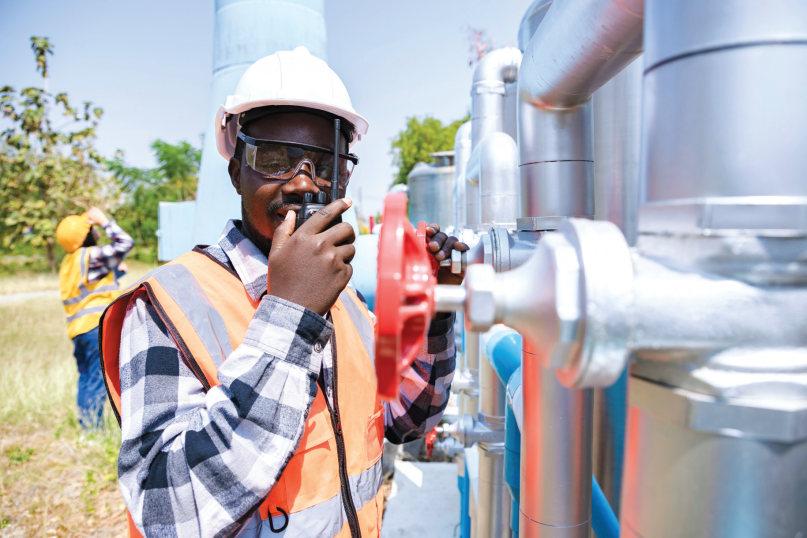
In recent years there has been a marked shift in Angola’s local content laws, most notably with the introduction of Presidential Decree no. 271/20 in 2020. For the first time, the laws included companies which supply goods and services to the oil sector, and not just exploration and production operators. This requirement expanded the country’s local content across a greater breadth of the energy industry. It is a framework that ChampionX Químicos strongly supports. With an approach that has long championed the upskilling and development of a local workforce and the associated local content, the company was well placed to take that forward as an integral and valuable element of its Angolan business strategy.
Increasing local content ultimately creates a more skilled workforce while also delivering sustainability benefits to a business. As the industry continues to respond to the
climate crisis, local content will be a focal point in supporting companies’ low-carbon goals and must be an important
consideration within any company’s sustainability strategy. ChampionX’s support goes back to 2004 when, in response to the first local content initiative, the company entered a joint venture with a local organisation to form an Angolan entity, ChampionX Químicos. From that time, it has been committed to developing local talent and making the most of the country’s own resources and capabilities.
As a result, ChampionX’s management team is 75% Angolanised today, and overall workforce increased from 87% Angolan in 2010 to more than
90% in 2022. It also increased total annual spend with local suppliers from 36% in 2010 to 50% last year, with 98% of services provided by local suppliers.
Over the years, ChampionX Químicos has invested hefty sums in local infrastructure, resulting in 56% of products being blended in-country. It continues to upskill local workers, delivering ongoing, targeted training programmes to support roles across sales, logistics, SHEQ, HR, finance and IT functions.
While the topic of local
Angola’s local content laws have expanded to include companies which supply goods and services to the oil sector.”
Local content will be a focal point in supporting companies’ low-carbon goals and must be an important consideration within any company’s sustainability strategy, writes Zenaida Martins, local content manager - Angola, ChampionX Químicos.
LOCAL CONTENT ISSUE 5 2023 • WWW.OI LREVIEWAFRICA.COM 16
ChampionX Químicos upskill local workers, delivering ongoing, targeted training programmes.
Image Credit: Adobe Stock
content often focuses on people, there is a much wider picture to consider around manufacturing and logistics capabilities. When looking specifically at production chemicals, solvents can account for as much as 80% of formulations. If these solvents are manufactured and imported from other countries, the carbon footprint of the final product would likely be higher compared to locally blended solvents utilising national workforces and local facilities.
Angola’s petrochemical manufacturing capabilities are still growing. However, supply is limited by the availability of solvents in the local market. A key element of ChampionX Químicos’s localisation strategy includes the development of chemical formulations that include solvents available in
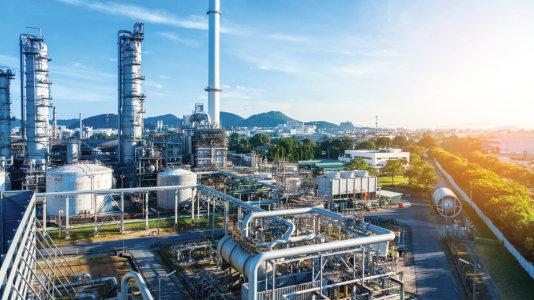
Angola, therefore lowering the number of overseas shipments.
The company currently has three logistical bases in Angola –Viana in Luanda province, Kwanda in Soyo province, and Malembo in the Cabinda province – and it operates manufacturing plants in two of these locations. Local capabilities include storage, filtration, decanting, and uniquely, blending abilities. This means bringing in concentrated products that are then blended in Angola, which significantly reduces logistics requirements.
There is a demand in Angola for real initiatives that can significantly improve sustainability. For this, the company focuses on identifying ways to improve sustainable practices through projects such as recycling single-use chemical
tanks and sourcing alternative energy for its blending plants.
For local content to be successful, it is critical that a clear, long-term strategy is developed which encompasses not just businesses but all relevant stakeholders. This includes governments, local authorities, educational institutions, and
industry associations. As the industry continues efforts to reduce carbon emissions, a robust strategy combined with suitable investment means localisation can unlock significant environmental gains while delivering a more skilled workforce and improved manufacturing capabilities, which support a net zero future.
C-Kore simplifies West Africa subsea testing campaigns

SEVERAL WEST AFRICA operators are using C-Kore’s subsea testing tools during routine maintenance to confirm the health of their subsea electrical systems. C-Kore’s tools quickly locate equipment needing attention, saving money and reducing downtime on operations. The operators experience a double benefit from this approach as it provides compliance with regulatory requirements and allows proactive remediation of degraded equipment before production is threatened.
C-Kore’s range of subsea testing tools are used globally by operators and contractors on faultfinding, new installation and decommissioning campaigns. The tools are easy to deploy and are operated without the need for C-Kore personnel being present, providing rapid and accurate
results. This combination of simplicity, accuracy and reliability allows operators to perform their testing operations faster with significant operational savings.
C-Kore’s philosophy, ‘Simplifying Subsea Testing’ starts with initial conversations with their customers. C-Kore’s engineers recommend the correct suite of testing tools and can even help with procedure writing. An interactive training is given on-line for each mobilisation. Since the tools are automated and pre-programmed before they leave C-Kore’s factory, no special offshore personnel are required to accompany the units, a significant savings on remote offshore mobilisation costs.
Greg Smith, operations director at C-Kore commented, “Our engagement doesn’t stop when the tools leave our facility. We take great care to ensure the customer is well trained with the equipment before the mobilisation and offer comprehensive remote support during their entire campaign. Often the outcome of our tests dictate what the customer will test next, so a fast response with data analysis is imperative for a quick, streamlined operation.”
Cynthia Pikaar, sales and marketing director at C-Kore commented further, “The number of jobs in West Africa is increasing. The great feedback received from our customers emphasises we are simplifying their subsea testing. Our state-of-the-art technology and high-quality service ensures customers keep coming back to us to help on future mobilisations.”
For further information on our innovative subsea testing technology, please visit our website, www.c-kore.com
LOCAL CONTENT ISSUE 5 2023 • WWW.OI LREVIEWAFRICA.COM 17
Image Credit: Adobe Stock
One of ChampionX Químicos’s localisation strategy is sourcing solvents available in Angola.
C-Kore tools are easy to deploy, providing rapid and accurate results.
Image
Credit: Adobe Stock

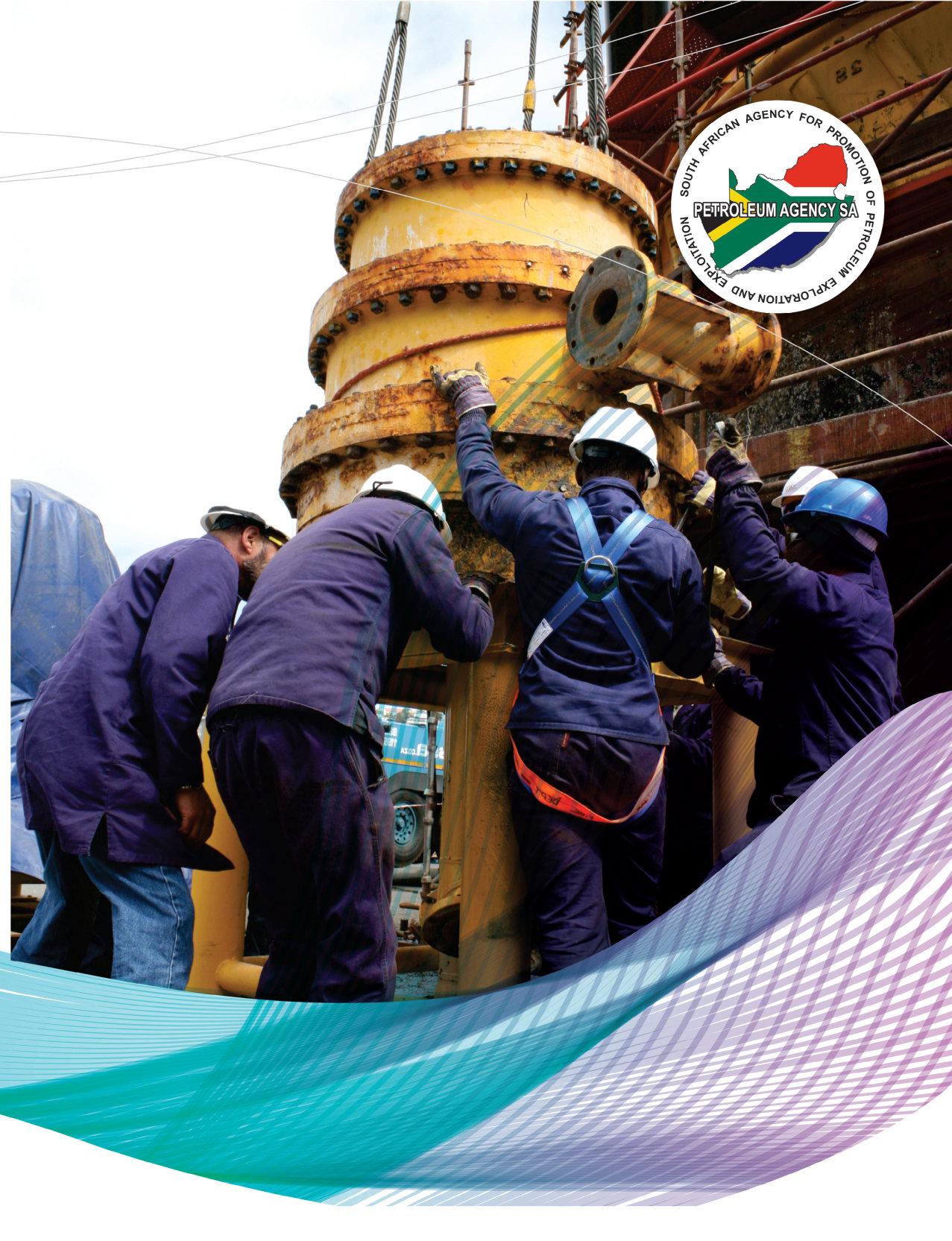
TURNING ON THE GAS
SA HAS ONE of the highest rates of unemployment and inequality in the world –and at the same time it is one of the world's most carbon-heavy economies. Coal dominates the national energy mix, contributing 80.1% of the national energy system demand in 2022; and its per capita emissions are 1.2 times the G20 average.
Yet what if SA could harness alternative energy sources? Changing the energy mix would reduce the country's reliance on carbon-heavy coal power while tapping into cleaner petroleum production and creating opportunities for jobs in the process.
Petroleum Agency SA (PASA) stands at the proverbial coalface of this.
Mandated in terms of Section 20 of the Minerals and Petroleum Resources Development Act (MPRDA) of 2002 by the Minister of Mineral Resources and Energy, PASA evaluates SA's petroleum
resources and promotes the country's prospectivity. "We have been delegated various first-tier functions relating to the acceptance and consideration of applications for petroleum rights and permits, says PASA chief operating officer, Bongani Sayidini.
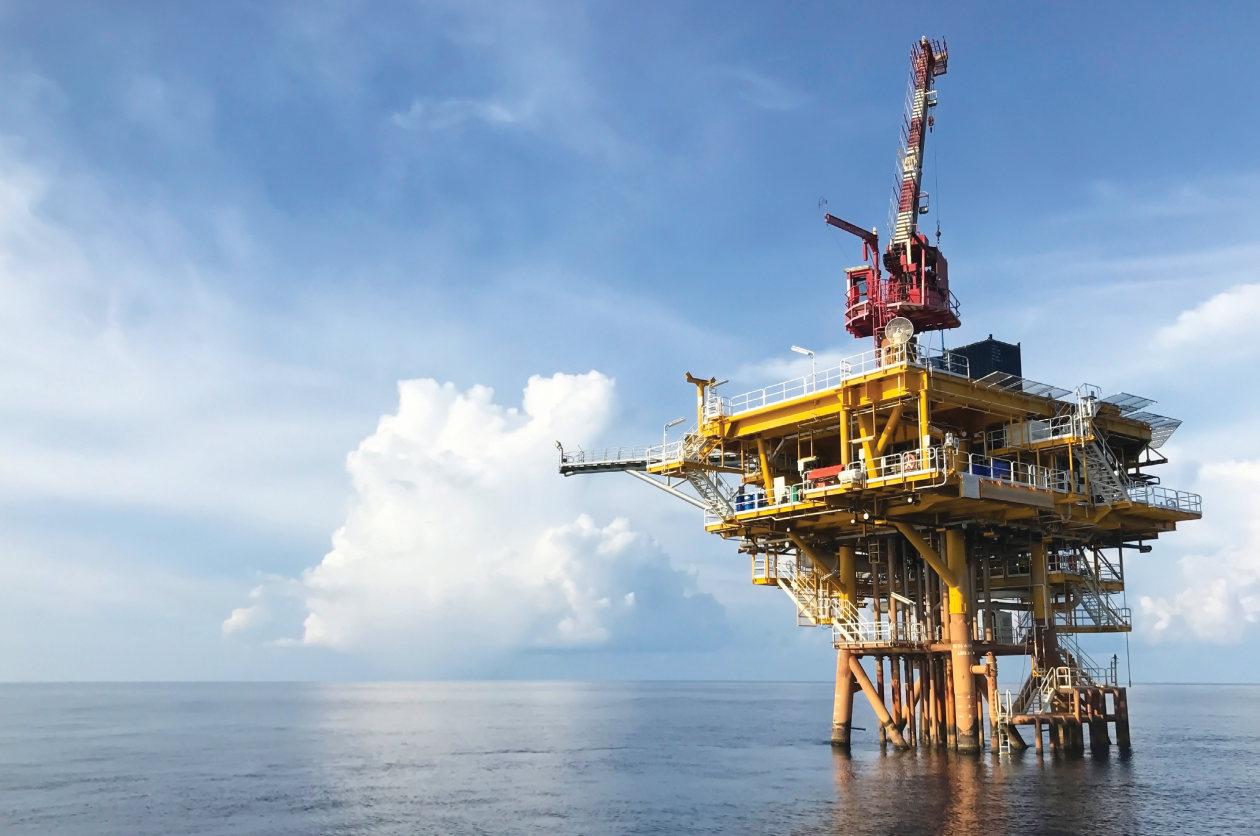
We perform an advisory and administrative role that includes receiving, evaluating and making recommendations to the Minister of Mineral Resources and Energy on applications for petroleum rights and permits, and monitoring compliance with such permits and rights. We also act as the custodian of the national
petroleum exploration and production database.”
PASA has been particularly busy of late, as it works with the government to solve SA’s energy supply crisis. There are at least 30 active exploration rights on- and offshore in the country, in various stages of exploration,” says Sayidini. “This could prove that the country is endowed in oil and gas. We estimate that there are some 60 trillion cu/ft of prospective gas resources along the south, west and east coasts of South Africa.”
According to the National Development Plan, 20 GW of electricity could be generated from just 24 trillion cu/ft of gas, which is almost half of the country's current electricity generating capacity. We remain excited about the gas potential in South Africa, particularly from a national energy security perspective, says Sayidini. The exploration and exploitation of these prospective gas resources could further aid the country's
transition towards net zero carbon emissions by 2050, provided all other fundamentals to support the development of gas are in place.”
PASA also estimates that the Karoo basin alone holds around 209 trillion cu/ft of technically recoverable shale gas resources (the US Energy Information Administration puts its estimate even higher, at 390 trillion cu/ft). "This is significant because this gas potential could seriously aid energy security of supply in the country.”
However, any enthusiasm about gas reserves in the Karoo must be tempered by concerns about the impact of extractive work on the region's air, water and soil. Fracking in the Karoo basin continues to be a subject of significant controversy.
The use of large amounts of water and production of wastewater induced seismicity, greenhouse gas emissions and groundwater contamination are real risks associated with
PASA is working with the government to solve South Africa’s energy supply crisis.”
Petroleum Agency SA is facilitating SA's shift towards cleaner energy.
PETROLEUM AGENCY SA ISSUE 5 2023 • WWW.OI LREVIEWAFRICA.COM 20
Image Credit: Adobe Stock
SA’s south, west and east coasts hold an estimated 60 trillion cu/ft of prospective gas resources.
hydraulic fracturing technology,' says Sayidini. However, these risks can be mitigated through appropriate regulations covering the full shale- gas life cycle.
“Indeed, hydraulic fracturing has been used in the oil and gas industry for at least seven decades – since the 1940s – and, in the past 20 years, together with horizontal drilling, has been instrumental in making the exploitation of unconventional resources technically and economically viable.”
What's more, communities and the environment will be protected by government regulations. Those regulations, says Sayidini, are one of the reasons why SA is so attractive to international oil and gas investors.
The licensing of petroleum rights in SA is governed by the
MPRDA and related regulations.
“It is fairly straightforward and low-cost,” says Sayidini, and that makes entry into the SA oil and gas sector easy. The country also has an attractive petroleum fiscal regime that, based on royalty and income tax, is linked to profits.
“It is a neutral regime, with the state-take limited to the available economic rent, which thus ensures a satisfactory return on investment,” he explains. “Further enhancing these regimes is the fiscal stability that is provided for in the Income Tax Act No 58 of 1962, with its various amendments, which in terms of the Tenth Schedule of the Act, allows the minister to enter into a binding agreement with any oil and gas company in respect of an oil and gas right to be held by that company.
“Such an agreement will guarantee that the provisions of the schedule – at the date on which the agreement is concluded – will apply in respect of that right, for as long as the right is held by the company.”
With that in mind, SA's first competitive auction for oil and gas resources will be held in 2024 or 2025, once the requisite legislation has passed.
"We are potentially looking at a minimum of about 10 shale gas blocks in the Karoo that will be released through competitive bidding,” says Sayidini. This includes acreage once held by oil and gas major Shell, whose 90,000 sq km became available after it withdrew an application to explore.
PASA han undertaken a

resource evaluation in the area, which confirms an active petroleum system in the Karoo. About 2500 soil samples were sent overseas for analysis, says Sayidini. Those confirmed gas and even oil seepages, suggesting that there might even be ponential for oil in the Karoo.
“The exploration of this shale gas holds many potential benefits for South Africa in terms of energy security, economic growth and job creation," he says.
“This will go a long way to reduce the country's reliance on coal as a primary energy source accounting for at least 75% of electricity generation. The exploitation of shale gas could seriously reduce the nation's carbon dioxide emissions and, in consequence, also lower its contribution to climate change.”
PETROLEUM AGENCY SA ISSUE 5 2023 • WWW.OI LREVIEWAFRICA.COM 21
HOTBED OF EXPLORATION AND PR ODUCTION ACTIVITIES
With every discovery, South Africa is on its path to beating power woes; Cabinda promises to cover 20% of Angola’s refined oil productions; Mozambique’s big breaks in LNG continues; Majors flocking to Namibia – southern Africa is witnessing endless developments.
AS THE ISSUE of power crisis continues to loom large on southern Africa, every discovery of energy resources in the region comes as major breakthroughs. One such latest development has been Kinetiko Energy Ltd’s findings of 6.4 bn cu/ft of gas reserves at its South African joint venture gas fields, where it holds 49% share of the total 3.1 bn cu/ft.
According to CEO Nick de Blocq, the discovery represents “one of the most significant and exciting moments in Kinetiko’s corporate journey to date in South Africa.”
"It should be well understood that the maiden gas reserve was issued on the basis of a very small project.
"The area considered is minute by comparison to our overall geography (about 0.2%) and yet the economics work out to be substantially positive with 2P certification for the project at about 6.4 BCF of gas,” he said.
Besides this, the company is further looking towards a couple of other prospective gas discoveries as well.
"Each time Kinetiko adds commercial production plans within its exploration rights, it will be able to grow reserve certifications by eventual orders of magnitude, with assumptions based on increasingly positive economics driven by deeper wells in the south with potentially
higher flow rates, and larger gas contents and better geophysical properties of the sediments to the north,” de Blocq said.
Reputed to be one of the
largest oil producers in Africa, Angola is steadily driving investment opportunities in the country since the last couple of years, ultimately leveling up the southern region’s performance in the oil and gas industry as a whole.

Spearheaded by an ambitious national oil company (NOC), Sonangol, Angola has seen marked developments from Azule Energy’s Agogo Integrated West Hub Development Project to the latest financial close on Cabinda Oil Refinery by Gemcorp Holdings Limited (GHL), Africa Finance Corporation (AFC) and African
Export-Import Bank
(Afreximbank). Other major players in the country include Chevron, TotalEnergies, Saipem, TechnipFMC, Subsea 7 and Seadrill, to name a few.
The US$473mn Cabinda project is financed through US$138mn of equity already provided by the project sponsors and US$335mn project financing facility led by AFC, Afreximbank and a consortium of international and local financial institutions. The project is being developed by GHL in partnership with Angola’s state oil company, Sonangol.
The credit facility covers the
One of Kinetiko’s latest findings include 6.4 bn cu/ft of gas reserves at its South African joint venture gas fields.”
SOUTHERN AFRICA ISSUE 5 2023 • WWW.OI LREVIEWAFRICA.COM 22
Spearheaded by an ambitious NOC, Sonangol, Angola has seen marked developments in the oil and gas space.
Image Credit: Adobe Stock
first phase of the project and paves the way for construction, which will enable the processing of 30,000 crude oil barrels a day. In due course, the second phase will add another 30,000, bringing the refinery’s refining capacity to 60,000 barrels a day on completion.
Upon completion of the first phase, the refinery is envisioned to deliver ~10% of the country’s total demand for refined oil products, increasing to ~20% upon completion of phase 2, while creating over 1300 direct and indirect jobs in the process. To date, there have been 300,000 man-hours of training completed for the upskilling of local employees, with 1,000,000 manhours worked on the project, all completed injury free.
Other lenders also contributing to the project financing facility include the Industrial Development Corporation (IDC) of South Africa, Arab Bank for the Economic Development in Africa (BADEA) and Banco de Fomento Angola (BFA).
This investment is playing a critical role in Angola’s energy security and delivering local employment opportunities while furthering the nation’s technological capabilities. It will also reduce the country’s reliance on imports to meet its current energy needs.
“Afreximbank is proud to contribute to such a crucial project for Angola and the wider region. Our participation in arranging the US$335mn financing together with our partners at AFC and Gemcorp, makes the project possible and will guarantee that it delivers development dividends in Angola and elsewhere in Africa. The establishment of a modular oil refinery in Cabinda will add critical value to Angola's main commodity and its largest export product, while contributing to a reduction in greenhouse gases by reducing the need to transport crude and refined products to
and from Africa. Afreximbank remains committed to playing a vital role in stimulating economic growth on the continent. We look forward to boosting intra-African trade through the supply of refined products from Angola to near markets,” said professor Benedict Oramah, president and chairman of the Board of Directors of Afreximbank.
Mozambique is quickly positioning itself as a globally competitive producer and exporter of natural gas. The country boasts the presence of several energy majors such as ExxonMobil and Eni, all of which have played a central role in driving large-scale gas developments.
Eni’s activities in Mozambique are going on in full swing as the company has managed to launch two FLNG facilities back to back –Coral Sul and Coral Norte. Coral Sul was the world’s first ultra-deepwater FLNG and the first LNG producer in Mozambique. Coral Norte is a replica of Coral Sul, comprising of six production wells and a subsea production system with
umbilicals, risers and flowlines (SURF). The facility is expected to produce 3.5 mn tonnes of LNG annually, besides condensate.
Namibia is another country in the southern Africa that is defined by major oil and gas discoveries. Findings by Shell, TotalEnergies and Qatar Energy – the Venus and Graff-1 –contributed to the highest value to last year’s global exploration developments.
Canadian explorer ReconAfrica is driving an onshore exploration campaign in the Kavango prospect.
ExxonMobil has also extended its acreage in Namibia following an agreement signed with
NAMCOR for Blocks 1711 and 1811A while French independent Maurel & Prom announced a five-well drilling campaign offshore Namibia in late 2022 and global major Chevron entered the market by securing an exploration license in the Orange Basin in 2022.

Geoscience data provider Searcher recently announced the completion of its multi-phase, multi-client 3D seismic acquisition campaign in the Orange Basin. It has successfully acquired over 6,700 sq km of 3D seismic data during the 20222023 season, providing a wealth of insights ranging from regional scale understanding, prospect derisking and field development imaging. The phased surveys have yielded invaluable insights into geological features and hydrocarbon prospectivity, imaging and delineating the reservoir geology of the Kudu gas field and other potential plays within the survey area.
Namibia is thus anticipating an oil and gas boom, owing to the positive string of developments in the sector.
SOUTHERN AFRICA ISSUE 5 2023 • WWW.OI LREVIEWAFRICA.COM 23
Mozambique was quick to win the status of a globally competitive producer and exporter of natural gas.”
ReconAfrica is driving an onshore exploration campaign in the Kavango prospect.
Image Credit: ReconAfrica
MEANS OF JUST TRANSITION
Africa is largely looking towards natural gas as a vehicular fuel among other applications, besides targeting the global supply gap.
Africa has more than 17.56 trillion cu/m of gas reserves.
WITH MORE THAN 17.56 trillion cu/m of reserves, gas is the most feasible option for Africa to keep up with the world’s sustainability approach. It falls perfectly in place with the continent’s ‘just transition’ practices as the West races to meet net zero targets.
Natural gas’ application as a vehicular fuel is especially gaining traction in Nigeria at the moment, following President Bola Ahmed Tinubu’s bold step
of scrapping the high demand fuel subsidy. State oil firm NNPC partnered with NIPCO Gas to speed up the adoption of compressed natural gas for buses, cars and tricycles to lower
transportation costs, Reuters reported last month.
The NNPC has struck a deal with NIPCO to roll out 35 compressed natural gas stations in phases over the span of a year. This is expected to serve more than 200,000 vehicles daily.
According to NNPC, 14 compressed natural gas stations are already under operation in NIPCO, and it has turned more than 7,000 vehicles to gas.
NNPC also said that it plans to deploy another 56 stations to
NIPCO, and encouraged other oil marketing firms to join to boost availability.
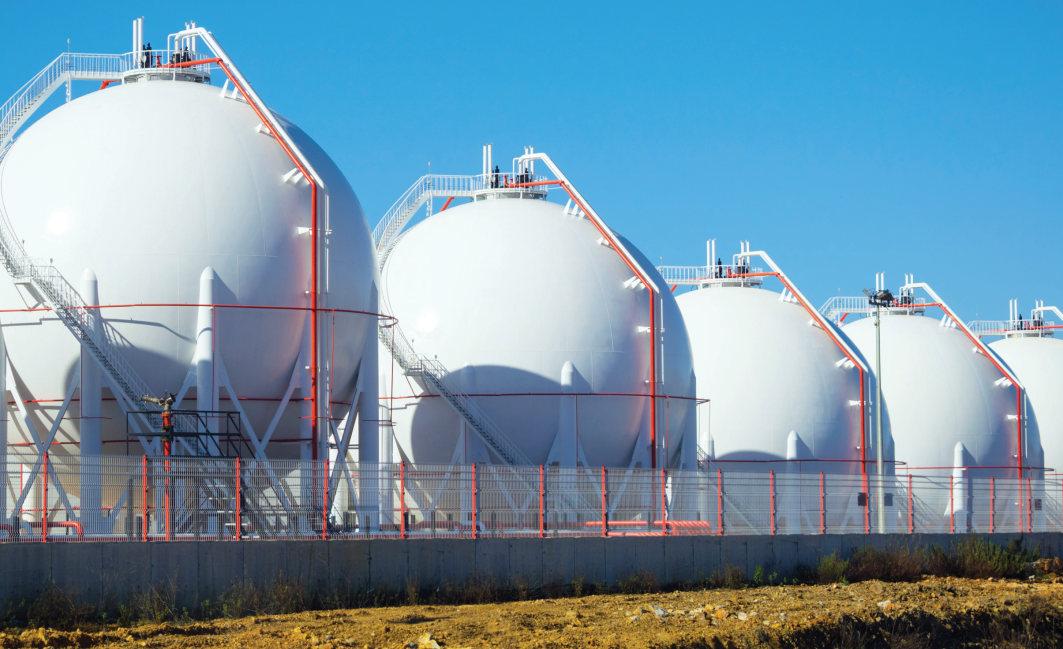
This move seems only natural given that Nigeria boasts to be one of the world’s biggest gas reserves.
In July, NNPC and UTM Offshore signed an agreement on the construction of a 1.5 metric tonnes per annum floating liquefied natural gas plant. It is a landmark development as Nigeria's first indigenous FLNG project.
NNPC and NIPCO will be launching 35 CNG stations.”
NATURAL GAS ISSUE 5 2023 • WWW.OI LREVIEWAFRICA.COM 24
Image Credit: Adobe Stock
“Final Investment Decision is expected to be taken in the fourth quarter of 2023 with planned project start up in the fourth quarter of 2026. When completed, it will produce 1.7 mn tons per annum of LNG and 300,000 metric tons of LPG which will be fully dedicated to the domestic market. The project is estimated to provide direct employment for 3,000 Nigerians and indirect employment for an additional 4,000 people. The LPG produced will help bring down the price of cooking gas, improve the socioeconomic wellbeing of Nigerians, reduce deforestation and carbon emissions,” said Julius Rone, Group managing director, UTM Offshore.
According to media reports, the FLNG vessel is set to produce 176 mn cu/ft of gas per day from the Yoho Field. The agreement lays out the terms of the NNPC’s 20% equity contribution of the FLNG project. The facility is expected to be complete by 2026, and comprises a turret mooring system, gas pre-treatment modules, LNG production modules, living quarters, selfcontained power generation and utilities alongside storage and offloading.
As per a seven-year contract with Iran signed in 2022, Nigeria is set to receive 1,000 CNG service stations and 70 conversion centres constructed by Iranian firms. The scale of the project will include 1 mn vehicles.
Equatorial Guinea, on the other hand, is working towards establishing itself as a regional Gas Mega Hub, developing a series of major infrastructure projects aimed at enhancing the country’s gas monetisation capabilities. The Gas Mega Hub will serve as a central hub for gas processing, liquefaction and distribution, and will require the expertise of highly skilled companies to successfully process LNG.
The concept of Equatorial Guinea's Gas Mega Hub came
into being a few years back when an agreement was signed between Marathon Oil, Noble Energy, Atlas Petroleum, Glencore and Gunvor to process stranded gas from the Alen and Aseng gas fields. Plans were also underway to explore cross-border reserves with Cameroon and Nigeria. Recently, the Presidents of Equatorial Guinea and Cameroon signed a bilateral treaty on oil and gas collaborations. That may include monetisation of crossborder hydrocarbon fields such as Yoyo (Cameroon) and Yolanda (Equatorial Guinea), and Cameroon’s Etinde gas field and Equatorial Guinea’s Camen and Diega fields.
The two countries’ success in achieving this milestone of signing the bilateral treaty can be largely attributed to the efforts undertaken by an integrated team led by the National Hydrocarbons Corporation of Cameroon and Equatorial Guinea's Ministry of Mines and Hydrocarbons. The agreement itself is set to kickstart the joint development of the countries’ vast energy resources, with oil and gas industry growth inevitable on the back of improved cooperation between
Cameroon and Equatorial Guinea.
However, the treaty represents just the start, with several challenges including restrictive foreign exchange regulations implemented by the Bank of Central African States (BEAC) that continue to deter foreign investment needs addressing.
Egypt is tapping its gas resources to not only meet its domestic needs but also capitalise on global market demands. Bagging US$3.5bn deals with BP to drill four exploratory natural gas wells, the North African country’s gas wealth is drawing big takers.

Recently Eni has offloaded the first LNG cargo from Egypt into Snam’s new regasification terminal in Piombino, Italy. The terminal has a total processing capacity of 5 bn cu/m per year, or approximately 7% of
Italy's gas demand. The LNG was produced at Egypt’s Damietta liquefaction plant, one of the facilities where Eni has invested with the strategic goal of growing its integrated liquefied gas portfolio.
However, currently the country has taken a hit in terms of its LNG export revenues. Egypt’s Central Agency for Public Mobilization and Statistics (CAPMAS) had announced that the country’s natural gas and LNG exports dipped by 75% in April compared to the same time last year.
“Egypt had a good run from mid-2021 to end 2022 as LNG prices surged, but that's over for now,” David Butter, a Middle East economic analyst, and associate fellow in the Chatham House MENA programme told media. “It is doubtful whether Egypt will match the 2022 export performance in either volume or value.”
Experts suggest that maintaining consistency in the production of natural gas and utilising them for domestic needs can still offset the blow from reduced exports as it will replace the need to import resources for power generation.
NATURAL GAS ISSUE 5 2023 • WWW.OI LREVIEWAFRICA.COM 25
BP strikes major deal with Egypt to explore natural gas in the country.”
Equatorial Guinea's Gas Mega Hub came into being with an agreement to process stranded gas from the Alen and Aseng gas fields.
Image Credit: Adobe Stock
FOR DRILLING OPERATORS, unplanned
downtime is the greatest foe. Finding the right wellhead for the job is key to avoiding non-productive time (NPT). While spending less on the front end may sound appealing, ensuring the reliability of the wellhead is vital in minimising downtime and maximising rig time.
Investing in quality wellheads
In today’s world, companies prioritise cost control regardless of market prices, and the wellhead is no exception. But in drilling, time is also money, and in the long run, higher quality wellheads are definitely preferable.
The advantages start at the beginning – wellheads with inferior components that arrive damaged or missing parts create immediate delays. Lower-quality wellheads are often more difficult to install, taking up even more time. Load rings that fail to
WHY THE WELLHEAD MATTERS

function easily waste hours. Make-ups and break-ups slow down operations. Meanwhile, rig time continues to fall below optimum levels.
However, the most significant operational concern with wellheads is support. Every wellhead will require service at some point, as components log additional hours. When operators are forced to resolve equipment challenges on their own without a skilled technical support partner, NPT is almost always a given.
Without insight from the wellhead manufacturer, any costs saved at the outset will be lost due to the time and effort needed to investigate and repair the
compromised machinery.
Companies must also factor in the health and safety their workforce and the impact made to the rig when deciding which wellhead to use. While all drilling rig components play their own part in successful projects, the wellhead's role in providing pressure control makes it one of the major factors in ensuring machinery’s environmental compliance and worker safety. Unreliable wellheads can lead to unexpected environmental impacts from leaks and openhole incidents. Malfunctioning wellheads require human intervention that always comes with some risks, and teams
pushing to get rigs up and running are under pressure to prioritise time over safety. Problems with environmental, health and safety factors all run the risk of slowing down operations.
Reducing NPT With unitised wellheads
Unitised wellheads are one option for superior quality that helps reduce NPT. Incorporating a one-piece body with a singlebore system, these wellheads have threaded connections that can be pressure-tested in the factory to guarantee reliability in pressure containment. Certain hangers and seals can be installed through
Unreliable wellheads can lead to unexpected environmental impacts from leaks and openhole incidents.”
Paul
Harthorn, technical team lead, SPM Oil & Gas, a Caterpillar Company, discusses the importance of prioritising quality when selecting wellheads.
DRILLING ISSUE 5 2023 • WWW.OI LREVIEWAFRICA.COM 26
Finding the right wellhead for the job is key to avoiding NPT.
Image Credit: Adobr Stock
the blow-out preventer (BOP) to save rig time, and operators have complete BOP control throughout the entire drilling process.
While unitised wellheads were originally developed for offshore use, their advantages have brought them into the onshore oilfield. For example, SPM Oil & Gas’ (formerly Weir Oil & Gas) Update to KOP Unitised LockRing (ULR) Wellhead, saves around 12.5 hours of rig time compared to a conventional wellhead. As land rigs cost US$15,000 to US$100,000 per day, these time savings equate to cost savings of approximately US$250,000 per day for operators.
The ULR can also improve customer safety profiles in the process of holding down costs. It
improves safety at the wellsite by eliminating lock pins and protects equipment beyond the wellhead from catastrophic events with an internal lock ring. When one customer in the USA experienced unexpected pressure that caused an 8,500 psi burst during the fracking process, the weld on the bottom of the casing head failed and the wellhead “jumped” several feet into the air. However, despite sustaining 600,000 psi of force, the ULR was intact – and no workers were harmed. In addition, the other equipment on the site’s surface was undamaged, preventing a repair bill that would have reached US$500,000 at the very minimum.
Technical support
Installing a high-quality wellhead
does not eliminate the need for convenient and responsive support. SPM Edge Services’ localised skilled technicians provide installation, repair and refurbishment as well as general support for the wellhead and other rig components, leveraging local content. Experienced support teams can also train field teams on best practices for operations and monitoring, working with crews to pinpoint root causes and develop quick solutions.

Wellheads that are available for a lower upfront cost without extensive post-purchase support ultimately run the risk of costing a company more than higher quality wellheads backed by engineering-driven technicians. The NPT caused when a part fails at the worst possible time can
become very expensive very quickly. Additionally, the pace of the oilfield can keep teams from proactively analysing equipment issues. Without a reliable services partner, preventive measures typically aren’t put in place, which can ultimately reduce profitability.
With faster installation, more reliable operations and rapidresponse support, higher quality wellheads offer operators a bestcase scenario for rig operations. Evolved rig technology helps companies remain competitive. Drilling companies who prioritise quality when selecting their wellheads will benefit from more reliable operations, increased uptime and superior safety and environmental performance – resulting in more successful outcomes overall.
DRILLING ISSUE 5 2023 • WWW.OI LREVIEWAFRICA.COM 27
OPTIMISING OPERATIONS BY STREAML INING PREVENTIVE MAINTENANCE
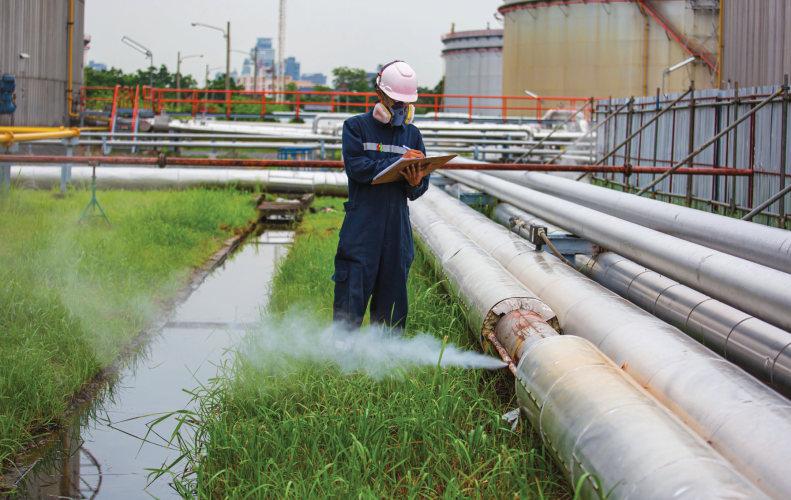
Risk and safety methodology has been enhancing asset strategies by focusing inspection and the associated costs on the most critical equipment, writes Chris Armitage, principal reliability engineer, ABS Group.
CONFRONTED BY CHALLENGES and opportunities, it is easy to lose sight of a simple fact: companies that fully assess their operating risks are better able to manage them strategically and improve their financial position. It all starts with how we measure plant performance: operations and maintenance. Operations is measured on how an asset is used, while maintenance is based on the availability of an asset. Herein lies the dilemma.
Most organisations begin their reliability journey in a reactive state. For example, if a new plant is under construction, the priority is getting it up and running – not what could go wrong in the future. As equipment and infrastructure matures and operations change hands, enhancing plant reliability and safety is ever more demanding. Recent projects in the US are now showing the benefits of incorporating preventative maintenance into asset strategies and their programmes to reveal key learnings.
Across industry, risk and safety methodology has been enhancing asset strategies by focusing inspection and the associated costs on the most critical equipment. Past operating conditions and inspection data can be used to make strategic future predictions, capturing a
‘risk snapshot’ in time. The approach involves the determination of a probability of failure combined with the consequence of failure.
At some point in the future, when a risk tolerance is expected to be exceeded, an inspection is recommended to better quantify the state of the infrastructure or component. The inspection itself does not reduce the risk, but it mitigates the uncertainty associated with the current degradation condition. This enables operators to better quantify the current damage present in the infrastructure or
component and helps engineers make more accurate projections on the asset’s remaining life.
Rise of asset strategies
This is where the establishment of asset strategies comes in. They define activities such as preventative maintenance (PM), inspections and condition monitoring to find impending failures. We know that assets will ultimately fail, but through effective strategies, organisations can give themselves time to do adequate planning and scheduling, so the failure doesn’t impact production or safety.
PM is an essential component of today’s business. It helps to ensure that equipment and machinery are running at optimal levels, but to be truly effective, a PM programme must be aligned with the core goals of the business. Before implementing any PM strategies, practitioners must first evaluate the business to identify any gaps in processes, people and knowledge. These will help identify which strategies will be most effective for addressing the specific needs of the business.
A company relying on their maintenance procedures for 10+
ASSET MANAGEMENT ISSUE 5 2023 • WWW.OI LREVIEWAFRICA.COM 28
Asset strategies involve the determination of a probability of failure combined with the consequence of failure.
Image Credit: Adobe Stock
years, and operating them in the same way for an extended period, will have seen 95% of all the failures that will occur.
Instead of returning to the drawing board as though the plant is brand new, addressing the failures that we know will occur saves time. This strategy avoids unnecessary labourintensive work that dreams up scenarios rather than starting with optimising what an organisation has and making subtle changes to improve efficiencies.
Back to basics
Before looking at optimising PMs, the first step is asset criticality ranking (ACR). Asset criticality is an objective process where all assets are ranked (pumps, motors, valves, fans, etc.). ACR assessments provide a prioritised asset master list, and reveals the relative importance of every asset at a plant, as well as how it effects the bottom line of operations. With this information, an organisation can start at the top and work its way through improvement actions. ACR helps get the most benefit out of PM optimisation. Typically, it is the top 25% of the list that is contributing to 80% of all the failures at a facility. If you get a good handle on the PM for that top 25%, it will likely take care of most problems. This sets the focus and investment right to gain the maximum value of your efforts.
Streamlining PM
Streamlining PM programme through innovative capabilities and knowledge transfer can have a significant positive return on investment (ROI), ensuring the longevity of equipment and changing the culture of an organisation. One way to overcome time-consuming and costly traditional PM tactics is by incorporating innovative capabilities.
Digital offers a continuous improvement and sustainability approach to PM. Their innovative solutions allow for real-time monitoring of equipment, identifying potential issues before they become major problems. ABS Group works with organisations to transfer knowledge and skills to their staff, so they can be self-sufficient in maintaining equipment and machinery.
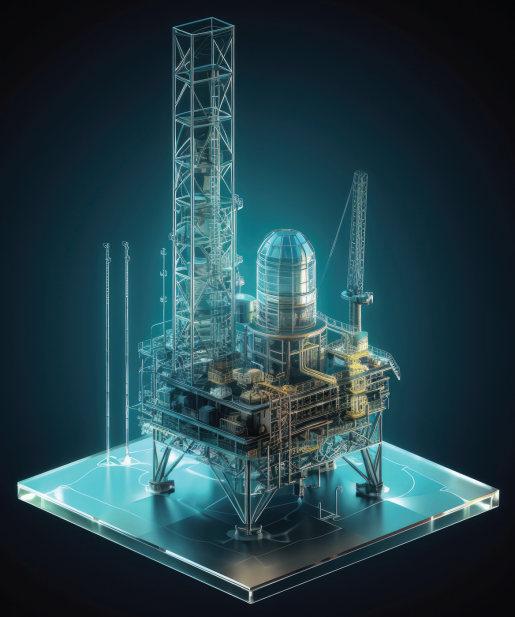
Focusing on failure risks
According to the American Society of Quality (ASQ), a failure mode is defined as the ways, or modes, in which something might fail (physical material condition). Failures are any errors or defects, especially ones that affect the customer and can be potential or actual.
Integrating the process
Information about operational requirements and equipment condition comes largely from people and their experience. Continuous conversation between the operator and technicians needs to be in place to have an optimised PM programme. Organisations are encouraged to include their operations and maintenance technicians when identifying the appropriate failure modes, and then work together to tailor the PM programme to address those failure modes. They
can thus tap into their expertise and provide buy-in, leading to a more effective and sustainable PM programme. Also, by creating a culture of knowledge, organisations can empower their people to take ownership of their equipment and required operations, leading to improved performance, increased efficiency and ultimately, achieving business goals.
As an example, a plant’s PM may involve going out and greasing the bearings on a motor to prevent it from failing in service. It’s crucial to consider the failure mode and the applicability of the task in addressing this. Organisations can determine the appropriate task frequency and adjust as necessary by involving maintenance technicians in this process. This approach helps in identifying impending failures and reducing unscheduled downtime brought on by inservice failures.
Asset
Performance Management (APM) – Powered by ITUS
Identifying and defining asset failure modes allows the maintenance manager to prioritise maintenance activities and corrective actions with the full context of actual failure risks to the organisation. The information captured in computerised maintenance management software (CMMS) can be generated automatically based on the equipment’s maintenance history (if available). Through this approach, the maintenance team can identify and evaluate the most persistent and impactful failures and define PM plans with the specific purpose of mitigating those consequences. One example of this approach is the asset risk analyser, a free solution to analyse failure risk and benchmark asset performance highlighted in the ABS Group’s latest White Paper ‘A streamlined approach to preventative maintenance: why you don’t have to go back to the drawing board to optimise operations’ (https://www.absgroup.com/content/documents/g atedresources/Path_to_Optimized_A sset_Management.pdf).
Once maintenance tasks which are targeted to address
ASSET MANAGEMENT ISSUE 5 2023 • WWW.OI LREVIEWAFRICA.COM 29
APM allows for real-time monitoring of equipment, identifying potential issues before they become major problems.”
Organisations can focus on optimising what it has and make subtle changes to improve efficiencies.
Image Credit: Adobe Stock
failures modes have been established , it is important to ensure all stakeholders can easily access the asset strategy and understand the status. In one single shared view all aspects of engineering, operations and maintenance can collaborate around the identified failure modes and PM tasks. More importantly, the team can also see the current state of the plan which includes emerging failure risks and appropriate execution of PM activities.
OEM recommendations
PMs are not intended to be a diagnostic procedure but instead an inspection to ascertain the health of equipment compared to the last reading, which helps organisations project when an asset needs corrective
maintenance over time. As easy as this sounds, when most companies institute PM, they usually base it on the OEM’s recommendations, which mainly follow the construction phase, as equipment may be under warranty.
OEM recommendations sound like a straightforward solution to PM; however, in most construction, the typical two-year warranty has already expired by the time the equipment is up and running. Additionally, OEM recommendations result from testing at the manufacturer site to cover a wide variety of circumstances that a plant may not experience in installing that type of equipment. Unless an OEM is not intended for a longterm service agreement or performance guarantees, building
reliability programme around warranty purposes should be avoided as one is executing PMs which may not align to their business objectives or operating context.
Why invest?
When market economics are good, organisations may not have the time; and conversely when markets are in recession, the money to invest isn’t available. Although time and money are always an issue, investing in integrity and reliability is a competitive advantage for the future. What we ‘prevent’ by investing now will pay off in future operations. Shortcutting safety performance and asset strategies become apparent in the future when incidents and accidents cost more than the
current investment for assurance.
Investing in a streamlined approach to PM, such as those offered by Itus Digital and ABS Group, can have a significant positive ROI. For example, spending US$100,000 from the operations maintenance (O&M) budget but saving US$300,000 in labour and downtime costs, typically results in a 3:1 ROI in the first year.
Unlike capital projects, the O&M budget is not new money. It is what one plans on spending if one does nothing in the coming year. With this approach, the 3:1 ROI is the savings in the O&M budget. It not only improves efficiency and reduces downtime, but it also allows for safer planned maintenance activities and helps to ensure the longevity of equipment.
REFLEX MARINE’S STORMWORK suspended work basket was successfully employed in its 100th offshore project in October 2020.
The STORM-WORK was designed specifically for offshore industrial work activities and was very well received by offshore operators across industries –heavy-lift, decommissioning, oil & gas, and offshore wind. ConocoPhillips in Australia is using the customised enlarged version of STORMWORK while the standard units have been employed in multiple projects throughout Europe, among others, with Seaway7.

The design, safeguarding both the workers inside the basket and the assets worked on thanks to the soft-touch features and contoured shape, is praised by users worldwide. The small footprint and light weight allow for improved
manoeuvring, while the highly durable, low-maintenance materials used ensure long unit lifespan.
“The unit is excellent for accessing areas with obstacles and tight landing spaces,”
Reflex Marine’s innovative work basket design has been recognised by industrial engineering body LEEA with an award in the Safety category
confirming the outstanding crew protection features and safety benefits.
STORM-WORK is available for purchase and hire and can be customised to meet the required size and capacity.
ASSET MANAGEMENT ISSUE 5 2023 • WWW.OI LREVIEWAFRICA.COM 30
comments a STORM-WORK user from Boskalis.
Leading in offshore safety: Reflex Marineʼs award-winning work basket has completed 100 projects.
The Reflex Marine STORM-WORK suspended work basket has been recognised by the LEEA with a safety award.
Image Credit: Reflex Marine
Schlumberger joins unified data ecosystem
TGS, CGG AND PGS, the multiclient data specialists, have confirmed that Schlumberger has joined Versal, a unified data ecosystem.
Increasing Schlumberger’s coverage to the vast majority of the available global sesimic data, the platform was originally launched in 2021. It supplies a vendor-neutral, single point-ofaccess to the industry’s largest multi-client data libraries, guaranteeing bolstered efficiency and usability.
“We are very pleased by Schlumberger’s decision to join Versal. They have a significant multi-client data library, and combining it with the seismic multi-client libraries of PGS, TGS and CGG makes Versal an even more important vendor-neutral cloud-based common ecosystem for multi-client data,” explained Nathan Oliver, EVP sales and services at PGS.
“We are proud and excited by Versal becoming a successful industry-wide digitalisation initiative.”
On the operator’s decision to join Versal, TGS’ EVP of digital energy solutions, Jan Schoolmeesters, added, “By adding Schlumberger’s multiclient data library to Versal, we’re now able to offer the industry a robust and collaborative solution to explore and evaluate virtually all global multi-client data. We look forward to our continued partnership with CGG, PGS and Schlumberger as we evolve.”
Since its launch two years ago, Versal now offers access to four of the industry’s largest multiclient data libraries, representing the majority of market-available seismic data.
Data-driven debut for Sercelʼs seismic survey solution
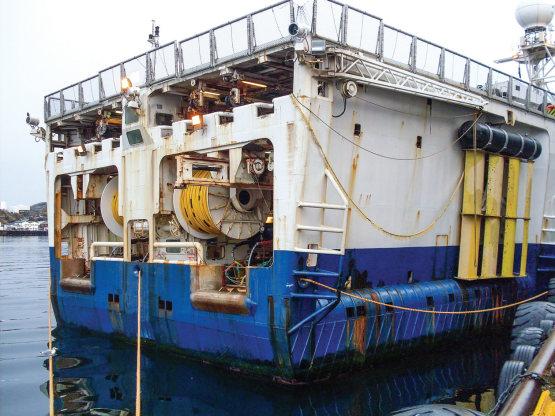
SERCEL HAS CONFIRMED the launch of MetaBlue, a datadriven solution for marine seismic survey planning, surveillance and management.
MetaBlue assists E&P companies and marine seismic service providers in reducing project turnaround times by seamlessly connecting every phase of a marine seismic project. This innovative solution facilitates greater collaboration between project stakeholders, right from inception. With all parties engaged from the outset, MetaBlue optimises marine seismic surveys, by driving superior operational performance and guaranteeing delivery of the highest quality seismic data for unsurpassed subsurface imaging.
MetaBlue enables operators to easily access and exploit the data gathered from various survey technologies, leveraging it within the MetaBlue ecosystem to streamline decision making and
revolutionise planning.
Emmanuelle Dubu, Sercel CEO, said, “We are delighted to introduce MetaBlue to the market, a true survey gamechanger that will reshape the way offshore seismic projects are
planned, managed and executed. MetaBlue's holistic approach, innovative technology integration and collaborative focus reflect Sercel's long-standing commitment to seismic survey innovation and excellence.”
Getech gathers new capabilities for research exploration with Globe 2023
SUBSURFACE RESOURCE LOCATOR Getech has unveiled the latest iteration of its digital platform, Globe.
Modelling the last 400 million years of the Earth’s evolution in 40,000 layers of geological data, the platform facilitates the exploration of subsurface resources, from critical minerals to carbon storage.
Globe 2023 offers bolstered features, shedding light on tectonic movement’s influence on resource location, as well as updated data with geology reconstructions and more exhaustive details than ever before.

Getech’s CCO, Chris Jepps, explained, “We continue to see strong demand for Globe from new customers and, through regular client engagement, we know how valuable this unique and detailed digital twin of the Earth is to its long-standing user-base.
“In Globe 2023 we are delighted to release a new version that reflects this evolving energy landscape, with new capabilities supportive of exploration across multiple energy sectors – including petroleum, minerals, metals, geothermal and energy storage.”
NEWS ISSUE 5 2023 • WWW.OI LREVIEWAFRICA.COM 31
MetaBlue assists E&P companies and marine seismic service providers in reducing project turnaround times.
The platform tracks the last 400 mn years of the Earth’s evolution.
Image Credit: Adobe Stock
Image Credit: Getech
IN A RESOUNDING stride toward technological innovation, pan-African telecommunications leader, Paratus Group, has unveiled a far-reaching multi-year partnership with Ceragon Networks, a global pioneer and premier wireless communications solutions provider. This strategic alliance is set to revolutionise high-capacity wireless offshore communication across key African locales: Angola, Mozambique, and Namibia.
Central to this collaborative endeavour is the fusion of Ceragon's cutting-edge stabilising technology, specifically designed for offshore assets like rigs and floating production storage and offloading platforms (FPSOs), with Paratus' robust onshore network infrastructure. The outcome is a paradigm-shifting amalgamation that offers reliable service, characterised by swift and secure data transmission of paramount importance.
The epicentre of Ceragon's efforts lies in its ability to forge offshore connections –whether affixed to floating, rotating, or navigating infrastructure –through an ingeniously stabilised live microwave conduit. This conduit spans up to an impressive 100 km offshore, linking seamlessly to Paratus' expansive pan-African network. The resultant connectivity is marked by its high quality and reliability.
For entities operating in oil and gas, the offshore setting is

FORGING TECHNOLOGICAL FRONTIERS
rife with inherent risks, exacerbated by the unyielding expanse of the oceanic setting. In this context, a robust and dependable communication infrastructure assumes an imperious mantle. The requisite is clear: onshore monitors must remain in ceaseless communion with their offshore facilities, demanding a communication
apparatus that not only defies corrosion and adverse conditions but also adheres rigorously to stringent safety protocols.
Ceragon rises to the challenge with an in-house certified solution that adheres to ATEX Zone 1 and 2 specifications. This astute compliance empowers the technology to function seamlessly even in highly combustible environments, where the adherence to safety requisites is paramount.
Adam Torry, oil & gas global sales manager at Ceragon, explained, “This is the fusion of two massive players whereby the combined strengths of both operators will be offered as a compelling solution for any energy or mining company that has offshore assets and needs to communicate, monitor, and
survey their equipment and data at any time. While our uniquely tried and tested stabilising equipment for the offshore environment has been successfully deployed in other parts of the world, this agreement is a first for Africa. Critically, energy companies prefer to work with one supplier for a solution of this complexity, rather than multiple service providers and this agreement means that we can fulfil that requirement and offer a one-stop shop for operators in the African oil & gas industry.”
Navigating the seas of innovation
Certainly, in a realm marked by pioneering resourcefulness, ADNOC Logistics & Services (ADNOC L&S), the maritime logistics arm of ADNOC,
Energy companies prefer to work with one supplier for a solution rather than multiple service providers.”
Africa is poised to witness a new era of technological advancement in satellite communications for the oil and gas industry, writes Minhaj Zia.
SATELLITE COMMUNICAT IONS ISSUE 5 2023 • WWW.OI LREVIEWAFRICA.COM 32
Forging offshore connections is central to Ceragon’s efforts.
Image Credit: Adobe Stock
unfurled a new chapter of collaboration. This chapter introduced a visionary agreement with SeaOwl, a forerunner of maritime automation and digitisation.
The keystone of this accord is the conceptualisation of unmanned ROVs by SeaOwl – a concept as audacious as it is environmentally conscientious.
These ROVs are tailored to handle the transportation of vehicles, equipment, and supplies to and from offshore enclaves. Beyond the evident practicality, these vessels encompass a profound promise: the reduction of carbon emissions by 30%.
An integral tenet of this design is the absence of conventional crew facilities, resulting in vessels that are lighter, more streamlined, and unburdened by the needs of human occupation. This reduction in bulk is paralleled by the incorporation of state-of-theart smart automation systems, a nuanced interplay of routing optimisation and propulsion enhancement. This will help align ADNOC L&S' offshore operations with the UAE's Net
SUBSCRIPTION FORM
I wish to subscribe to Oil Review Africa for 1 year (6 issues) starting with the next copy. Europe a 93, Kenya Ksh 2800, Nigeria N4800, South Africa R340, United Kingdom £63, USA $124
Enclosed is my cheque/draft ❑ Please send us the invoice ❑
Please debit my: Amex ❑ Visa ❑ Mastercard ❑
Card number: oooooooooooooooo
Expiry date: oo/oo Security Code: ooo
(Please note that we will debit your account in sterling).
Name Position Organisation Telephone Fax
Address Country Signed Email: Date Send this subscription form by airmail together with cheque payable to: Alain Charles Publishing Ltd, University House, 11-13 Lower Grosvenor Place London, SW1W 0EX, UK
Subscription order can also be placed via the web: www.alaincharles.com or email at circulation@alaincharles.com
YOUR JOB TITLE/FUNCTION
Corporate Management
Government Municipal, Public Services Executives
General Management
Technical Management
Others, Please specify
YOUR BUSINESS
Government/Public/Diplomatic Services
Infrastructure
Educational/Research Institutes
Industry/Manufacturing
Commercial Services
Import/Export Agents, Distributors
Commercial Transport
Oil & Gas: Exploration, Dirlling and Production
Oil & Gas: Downstream Processing
Oil & Gas: Other, Please specify
Others, Please specify
Zero by 2050 Strategic Initiative and ADNOC's far-reaching 2030 Sustainability Agenda.
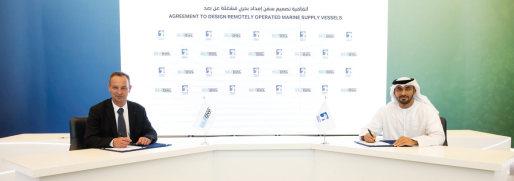
The 55-metre-long ROV allows it to be operated from a distant onshore command hub, deftly navigating the seas through a satellite conduit –achieved through the utilisation of the latest technological advances in automation and self-navigation. With a symphony of artificial intelligence at its helm, the ROV governs propulsion, dynamic
positioning, remote communication, and cybersecurity with finesse and acumen.
As these feats of engineering materialise, they will join the fleet of ADNOC L&S This and the expansive logistics infrastructure sprawled across a 1.5 mn sq/m canvas in Abu Dhabi, firmly cements ADNOC L&S' status as a titan in regional shipping and integrated logistics – an entity striding purposefully toward the maritime future.
SATELLITE COMMUNICAT IONS ISSUE 5 2023 • WWW.OI LREVIEWAFRICA.COM 33
Image Credit: A DNOC
The signing between ADNOC and SeaOwl.
ADVERTISE R’S INDEX Ariel Corporation........................................................................................................................15 C-Kore Systems Ltd..................................................................................................................21 Container World Pty Ltd..........................................................................................................27 Eko Hotel and Suites....................................................................................................................2 Flyability SA................................................................................................................................11 Oman Cement Company..........................................................................................................36 Petroleum Agency SA................................................................................................................18 Reflex Marine................................................................................................................................5
An integral tenet of this design is the absence of conventional crew facilities, resulting in vessels that are lighter.”
01 02 03 04 05 54 03 02 01
64
06 16 08 10 74
04
THE RISE OF DRONE INSPECTIONS FOR ASSET MANAGEMENT IN OIL AND GAS
WHILE MANY SERVICE providers advertise the use of drones in oil and gas asset inspections, many asset owners are not yet convincedwhy would you use a drone for inspections?
Safety. Safety is a primary reason for using drones for inspections of assets in oil and gas. The Elios 3 drone is equipped with special flight technology and a protective cage to ensure the drone can move with confidence around and inside complex assets. By sending the drone inside a tank, it gathers data without having to send someone inside confined spaces or hazardous environments. The collisiontolerant drone collects both visual and LiDAR data, giving a full picture of the asset.
This ties into the second reason for using drones in asset management inspections: access and data coverage. When an Elios drone is used to inspect a tank, it can fly along the length of the asset from the inside, giving a complete overview of the asset’s condition. With this comprehensive data coverage, a drone inspection can provide
centimeter-accurate detail on potential maintenance needs and help plan for future repair work.
As a result, a drone inspection provides both safer work
conditions and more data coverage than traditional methods.
Finally, the third reason people rely on drone inspections: cost and time savings. With the use of
a drone, by improving safety and getting more comprehensive data on the status of assets, you save money. For example, on a Floating Production, Storage, and Offloading Vessel (FPSO), traditional tank inspections take four to five rope-access technicians working over sevent to 10 days. However, with the Elios 3 drone, the same inspections required two people to complete the inspections over just two days. The cost savings behind drone inspections come from safer operations in combination with faster operational time.
Another example was when an Elios drone inspected a drilling rig ballast tank. The downtime related to inspections for this tank was reduced by 80%, while the associated costs were also cut by 60%. No one was required to go inside the confined space or use ropes for access, which made the overall project safer and more efficient.
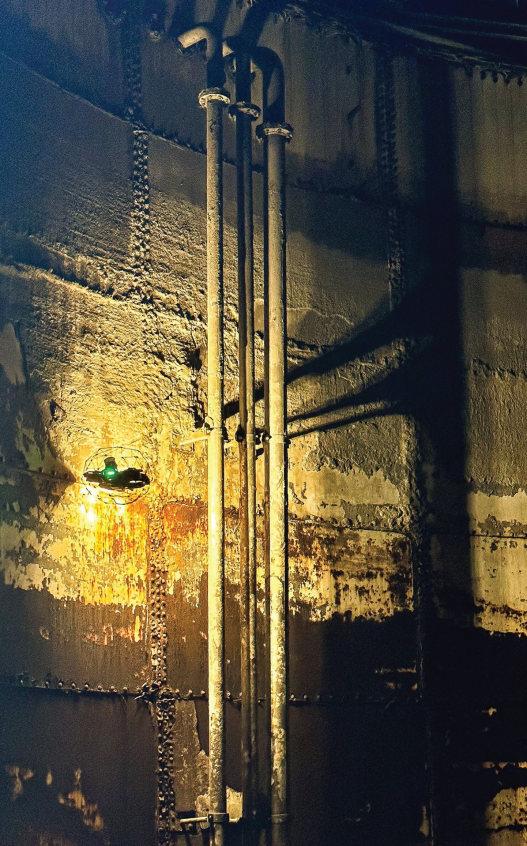
In the oil and gas industry, efficient and economical monitoring of infrastructure is needed to avoid losses, downtimes, and expensive repairs. Flyability’s indoor drones let users systemise their inspection efforts and gain critical insights into assets – without putting the team at risk.
For further details, visit: https://www.flyability.com/oiland-gas
The Elios 3 can cut inspection downtime by 80%.”
The Elios 3 drone from Flyability SA is equipped with special flight technology and a protective cage to ensure the drone can move with confidence around and inside complex assets.
DRONES ISSUE 5 2023 • WWW.OI LREVIEWAFRICA.COM 34
Image Credit: Flyability SA
The collision-tolerant drone collects both visual and LiDAR data, giving a full picture of the asset.
